Art Deco Inspirations In Palm Beach: The Palladium Dance-Hall, Cafe And Shop - The Surf Pavilion - The Beacon Store
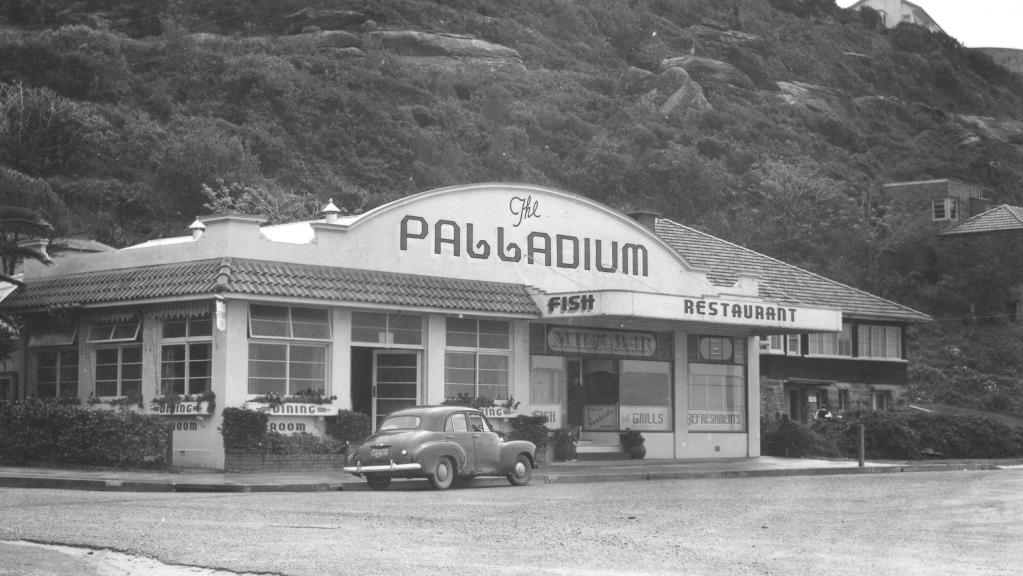
The Palladium, Palm Beach, 2019
At Palm Beach there are, or once were, public buildings which were later termed in the style of 'Art Deco'. The Palladium, Pavillion and Beacon Store opposite the Beach House at station Beach being obvious examples.
Further south the film Theatre at Collaroy strands out as another still existent structure of that style.
What is not as well known is that those who designed these buildings were not high flying architects who lived at Elizabeth Bay (where so much of Sydney's Art Deco style buildings still stand) or rarely left the city. They were local residents - John Carrick Rennie-Bartle, who designed the Collaroy theatre actually lived and worked from Collaroy and later moved to Manly, while Lindsay Gordon Scott, who designed the Pavilion at Palm Beach, was also a manly resident and worked from the firm of Ross and Rowe, of Ruskin Rowe, Avalon Beach renown.
Worth noting is when Manly Council met for the first time on 15 February 1877, the first mayor elected was Thomas Rowe, father of Harry Ruskin Rowe of Ruskin Rowe, the street, also tree lined, of Avalon Beach.
Visit: Shopping And Shops In Manly: Sales Times From 1856 To 1950 For A Fishing Village
DOWN AT AVALON. Three clubs — Collaroy, North Narrabeen, and Newport — made Avalon Beach their rendezvous last Sunday for the purpose of giving instruction to the new local club. Mr. Ramsay Sharpe was in charge of the teams, who were welcomed by Mr. Small, Dr. Hanson, Mr. Fox, and other residents of Avalon. An interested spectator of the general proceedings was Mr. Ruskin Rowe, one of the pioneers of Freshwater Club and now a member of Bondi. With a view of stimulating interest Mr. Rowe has offered a prize of £2/2/to the first Avalon member qualifying for the bronze proficiency medallion of the S.L.S.A. BONDI FOR SURF CHAMPIONSHIPS COOK'S HILL NEXT SATURDAY. (1926, January 10). Sunday Times (Sydney, NSW : 1895 - 1930), p. 7 Section: Social and Magazine Section. Retrieved from http://nla.gov.au/nla.news-article128124019
“In olden days a glimpse of stocking was thought of something as shocking. Now heaven knows, anything goes!” - Cole Porter
The lyrics from Anything Goes, that perennially popular musical of the 1930s, sums up the spirit of the interwar years around the world. Sydneysiders were excited by the opening of the Sydney Harbour Bridge that finally linked the two halves of the city, the lounge of the Hotel Australia or a gala night at Romano’s matched any revelry happening in an America under Prohibition or a London under the Prince of Wales-Simpson years, albeit with fashionable hats, gloves and dignity intact, and men in their 'flying machines' opened up the skies and their vistas in yet another example of limitless horizons and freedom - a shift from those long romantic cruises aboard vessels that would take at least six weeks to take you to 'the old country'.
A spirit of change, innovation and energy was visually united around the globe, from Miami and New York to Mumbai to Melbourne – by a design style that came to be known as Art Deco. This first appeared in 1925 at the International Exhibition of the Decorative Arts held in Paris, but was not known as Art Deco until the 1950s. Even without a 'name' this became the predominant style for the interwar generation and its influence was seen in architecture, fashion, art, furniture, jewellery and design in general.
Art Deco moved away from the over-the-top flourishes of the Beaux Arts style and romanticism of Art Nouveau to create a style that spoke to the future – while also drawing on influences from the past.
Art Deco style features included strong linear elements, stepped facades and ornamentation that drew inspiration from many sources including Middle Eastern architecture, Ancient Greek and Roman themes and also Ancient Egyptian and Mayan elements. In addition, Art Deco incorporated motifs from the exciting modern age; a time when trans-continental air travel became possible, motor cars became more prevalent and radio sales overtook the traditional family entertainment unit, the piano. These modern motifs included stylised machine patterns like gears and wheels as well as elegant interpretations of sunbursts and flowers.
Life was “…being hustled by a modern crowd into the modern city streets, where electric trams, motor cars, concrete and steel, colour and human beings seem all messed up and doing jazz,” wrote frequent Palm Beach 'seasonal' Jean Curlewis in 1928, when Art Deco and all it entailed was just starting to in Sydney. “The jazz of moving shapes makes patterns in the streets whilst up above against the sunset sky is the jazz-like serrated edge of the up and down masses of concrete and steel. What we cannot get in romantic, old-world subjects in the modern youthful city…must be turned to account in exploiting its modern possibilities.”
Jean was the daughter of Ethel Curlewis, better known by her maiden name of Ethel Turner:
Ethel Turner : At Her Window
(By M. Cox-Taylor
At her desk we know her. From this forum she addresses an audience of Youth Unlimited. And for twenty-eight years, inspired by that bubble of pcrenmal childhood in her heart, she has so addressed it in her peaceful study at Avenel. There have been two desks. An older favourite, not so often used in recent years, is more or less pensioned off, with bulging largesse of papers, MSS. which she has hurriedly scribbled and put aside, rough notes that collect, like accidents, in the best regulated homes.
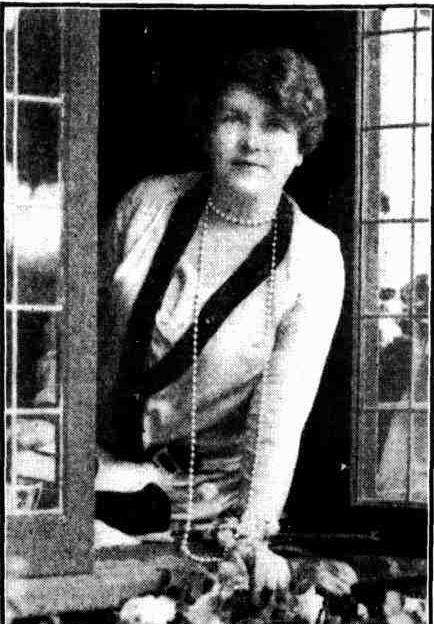
ETHEL TURNER (MRS. H. R. CURLEWIS).
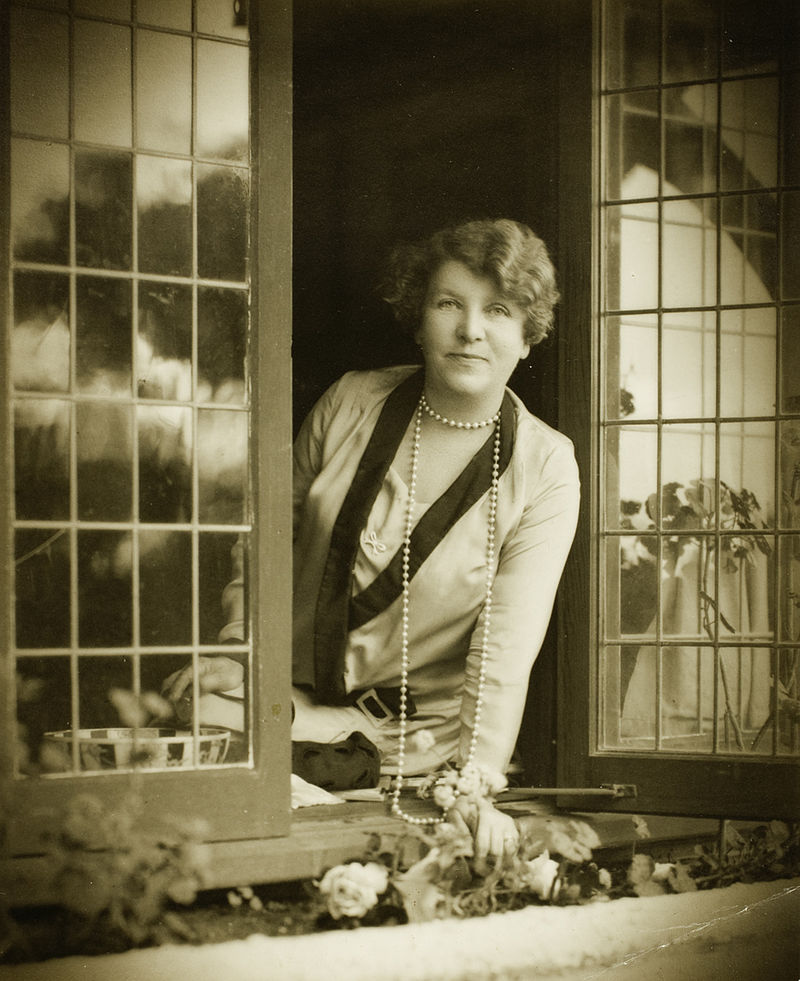
IN her work Ethel Turner (Mrs. H. R. Curlewis, wife of Judge Curlewis, of Avenel, Mosman) is most methodical. Not precise. She is too young to fidget — eternally young with those blue eyes, radiant smile, and sweet, unspoilt nature— about the habit of papers that hang on a borderline between the things that are carefully pigeonholed and the things that ought to go to the waste-paper basket. So they just tuck away in that old writing-table's drawers. Perhaps she has, with the sensitive temperament of the literary woman, gradually flung an atmosphere that helps into that other big, high-backed desk of hers. There she sits most mornings in the week. 'How do you arrange your days?' I asked her recently. 'I have no rules — except the rule that one cannot give way to the lure of fine mornings when the world out of doors is calling. I am very fond of gardening. There would always be an excuse to leave my desk and do something in the garden when I feel less inclined to write.
Then are days when I keep on till I have finished something — and time means nothing.' In this attitude, which is firm and insistent on making to-day carry its own task — the task of her choice and the work for which she has inimitable skill — Mrs. Curlewis has achieved a library shelf full of children's books. Though youth in the teen age also absorbs them — since the year when 'Seven Little Australians' made a sensational success — they are essentially the reflex of all that is most naive and humorous in the child mind. With Judy and Punch Ethel Turner has in her more recent book carried on the story which made her name.
ANTHONY TROLLOPE, with his watch on the table beside his desk, weighed out in minutes the hours he intended to sit and sift the lives of bishops, prebendaries, and poor curates in English cathedral towns. Possibly he began with the difficulty of acquiring concentration. Without turning his head to look at a clock, the friendly face of a large fat watch reminded him that he must, like the Perpetual Curate, be amenable to the advice, 'It's dogged as does it!'
Tennis used to be a favourite game of Ethel Turner. Now her play-time goes in golf and surfing. In the latter she gets that exhilaration that is passed on to the breezy dialogue of boys and girls. Her garden, like her home, is beautiful. In both there is a great deal of this popular writer's favourite colour — blue. 'I am trying to have whole beds of nothing but blue flowers,' said Mrs. Curlewis; 'but somehow little pink ones will come up between.' The seaside cottage at Palm Beach and the new cream and blue bungalow on the brim of the Leura golf links are her play places. At her desk in serious working hours, when the call of the outdoor is persistent, and song of the thrush in the tree near the gate is a clarion cry to 'come out and have a game in the garden,' Ethel Turner knows where to rest a moment. She likes to sit on the deep, low sill of the casement window and take time off — just five minutes to watch the butterflies flaunt, gauzy wings over the blue of tall delphiniums. Ethel Turner : At Her Window (1930, February 12). Sydney Mail (NSW : 1912 - 1938), p. 29. Retrieved from http://nla.gov.au/nla.news-article160632788
The end of 1930 in Sydney meant people would still be going to Palm Beach to which the words cosmopolitan''and 'modern' were applied over and over through the early 1930's
Some of Sydney's Seaside Homes
Holiday Trek Begins
Once again the New Year will be ushered in with the jolly house parties, although, of necessity, smaller and less of them. Despite dismal predictions to the contrary it looks as if Palm Beach will again be in the public eye (though a little less obviously) with its bright house parties and never-ending display of the newest in surf wear. Long before It ever loomed there, however, well-known Sydney folk had earmarked It as the ideal holiday spot and established some lovely homes.
The A. J. Horderns own the long, low-lying villa at the end of the beach, which was lent to the de Chairs and their family for a summer holiday. This place boasts its own electric light plant and to add to his gentlemen guests' comfort, the host even has the rooms stocked with extra in outfits. Well-known is the old-established wild garden, featuring tropical plants which surrounds the home of the R. T. McKays, and that of the young Graham Prattens, which is secluded among groups of gum trees.
Most suitable for a beach colony is the shingled Swiss chalet of Mr. and Mrs. C. P. Curlewis, set in a grove of tall palms, while the rough rock-hewn studio lodge of the Byram Mansells, filled with treasures from this artist's travels abroad, is set on a rocky crag with a garden of cactus and rock plants and a small .plantation of banana trees. A unique pine tree stands in the garden of the H. Holstenholmes' ** place, which was one of the first down there.
The S. Perrys have called their home "Bobstay Cottage," and furnished the interior in Italian style, thus giving scope to Mrs. Perry's love of color. Dr. . and Mrs. Brown Craig, who have had a home there for years, own a caravan equipped with bunks for the kiddies, which stands in the grounds and always attracts much interest.
Another item of interest is the motor-driven lawn-mower of the T. Peters, which keeps the lovely lawns in order around their concrete home in the central position on the beach front. The S. H. Hammonds, of Lindfield, whose daughter Joan shines among the Junior golfers, have a cottage close to the links.
Away on the top of the hill is Judge and Mrs. Coyle's cottage, while Mrs. H. H. Bullmore with her -three daughters, Mr. W. M. Hughes, M.P., and Dame Mary Hughes, and Mr. G; V.- Coulter, a retired scenic artist, are among the other householders. ... Some of Sydney's Seaside Homes Mountain Holiday Homes (1930, December 14). The Sun (Sydney, NSW : 1910 - 1954), p. 1 (SUPPLEMENT THE SUN SUDAY). Retrieved from http://nla.gov.au/nla.news-article225341644
** - Should be Wolstenholme - one of the sons of Bayview's Maybanke Anderson (previously Wolstenholme) - visit; The NSW Women's Legal Status Bill 1918: How The 'Petticoat Interference In Government' Came Of Age - A 100 Years Celebration Of Women Alike Our Own Maybanke Selfe-Wolstenholme-Anderson
During the 1930's Great Depression, the Art Deco style became more subdued. New materials arrived, including chrome plating, stainless steel, and plastic. A sleeker form of the style, called Streamline Moderne, appeared and this featured curving forms and smooth, polished surfaces.
Streamline Moderne or simply Streamline, or, in France, the Style Paqueboat, was also known as the Ocean Liner style. Distinctive straight lines—often three in parallel—were used horizontally, vertically and diagonally in conjunction with geometric curves. Low-relief sculpture was popular and was heavily stylised and tended to be rather naïvely symbolic of speed, power, industry or progress. Buildings in this style were had rounded corners, long horizontal lines; they were built of reinforced concrete, and were almost always white; and sometimes had nautical features, such as railings that resembled those on a ship.
The rounded corner was not entirely new; it had appeared in Berlin in 1923 in the Mossehaus by Erich Mendelsohn, and later in the Hoover Building, an industrial complex in the London suburb of Perivale. In the United States, it became most closely associated with transport; Streamline moderne was rare in office buildings, but was often used for bus stations and airport terminals, such as terminal at La Guardia airport in New York City that handled the first transatlantic flights, via the PanAm clipper flying boats; and in roadside architecture, such as gas stations and diners. [3.]
This style suited beachside locales of course. Examples of this shift between Art Deco and the Ocean Liner style show best in the contrast of Palladium at Palm Beach and the movie theatre at Collaroy.
Palm Beach was the place to be by the early 1930's and only became more so - people flocked to the seaside idyll, to see and for some, to be seen, although the core group of those who had first arrived in the 1920's as permanent residents and permanent seasonal visitors had then, and remain so, bent on saving the lives of those who came to enjoy the surf and sea.
palladium. noun (2) Definition of palladium (Entry 2 of 2) : a silver-white ductile malleable metallic element that is used especially in electrical contacts, as a catalyst
In Greek and Roman mythology, the palladium or palladion was a cult image of great antiquity on which the safety of Troy and later Rome was said to depend, the wooden statue (xoanon) of Pallas Athena that Odysseus and Diomedes stole from the citadel of Troy and which was later taken to the future site of Rome by Aeneas. The Roman story is related in Virgil's Aeneid and other works. Rome possessed an object regarded as the actual Palladium for several centuries; it was in the care of the Vestal Virgins for nearly all this time.
In English, since around 1600, the word palladium has been used figuratively to mean anything believed to provide protection or safety, and in particular in Christian contexts a sacred relic or icon believed to have a protective role in military contexts for a whole city, people or nation. Such beliefs first become prominent in the Eastern church in the period after the reign of the Byzantine Emperor Justinian I, and later spread to the Western church. Palladia were carried in procession around the walls of besieged cities and sometimes carried into battle.
The London Palladium is a 2,286-seat Grade II West End theatre located on Argyll Street in the City of Westminster. From the roster of stars who have played there and many televised performances, it is arguably the most famous theatre in London and the United Kingdom, especially for musical variety shows.
Walter Gibbons, an early moving-pictures manager, built the Palladium in 1910 to compete with Sir Edward Moss's London Hippodrome and Sir Oswald Stoll's London Coliseum. The facade (on the site of Argyll House, demolished in the 1860s,[2] from which the pub opposite took the name The Argyll Arms), dates back to the 19th century. Formerly it was a temporary wooden building called Corinthian Bazaar, which featured an aviary and aimed to attract customers from the recently closed Pantheon Bazaar (now Marks and Spencers) on Oxford Street. The theatre was rebuilt a year later by Fredrick Hengler, the son of a tightrope walker, as a circus arena for entertainments that included promenade concerts, pantomimes and an aquatic display in a flooded ring. It then became the National Skating Palace – a skating rink with real ice. However the rink failed and the Palladium was redesigned by Frank Matcham, a famous theatrical architect who also designed the Coliseum, on the site that had previously housed Hengler’s Circus. The building now carries Heritage Foundation commemorative plaques honouring Lew Grade and Frankie Vaughan.
The design for the Palladium at Palm Beach was approved by late 1930:
Palm Beach. — Paladium Building (shops and Offices), Ocean-Road..— Mr. Pike, Strathfield. Brookvale. — Golf Links, Barrenjoey Road. — Mr. Pike, Barrenjoey Road, Strathfield. Brookvale. Kiosk, Pittwater Road.— J . G. Tribolet, Tram Terminus, Narrabeen ... Buildings and Works Approved (1930, November 26).Construction and Real Estate Journal (Sydney, NSW : 1930 - 1938), p. 2. Retrieved from http://nla.gov.au/nla.news-article130908566
This 1932 article shows how the structure was at the beginning of 1932:
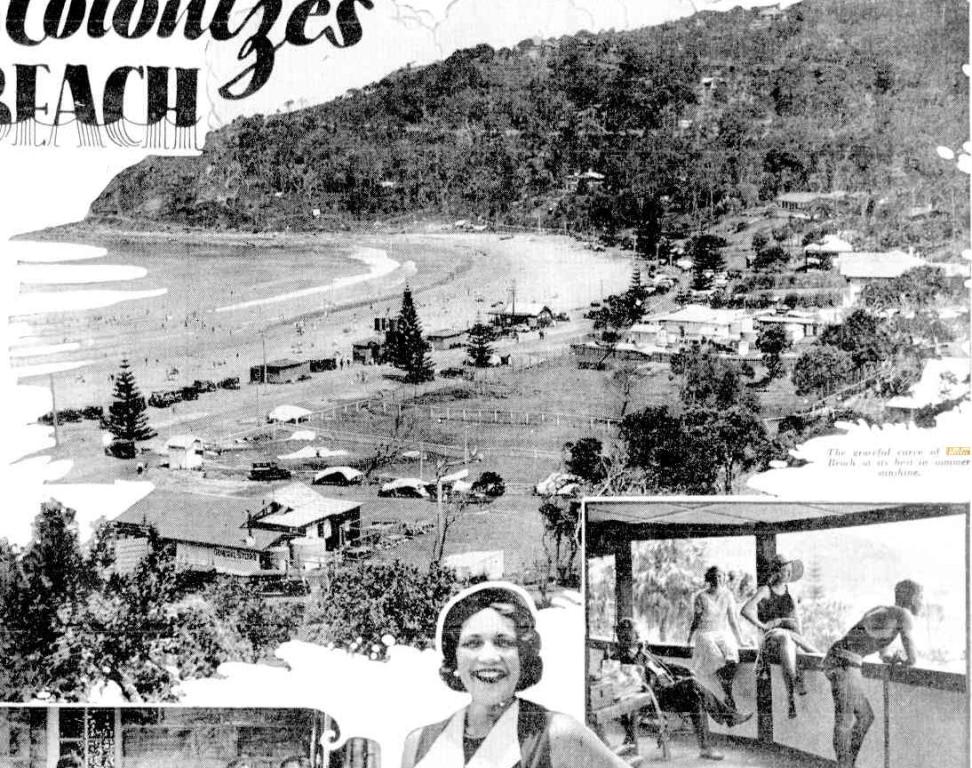
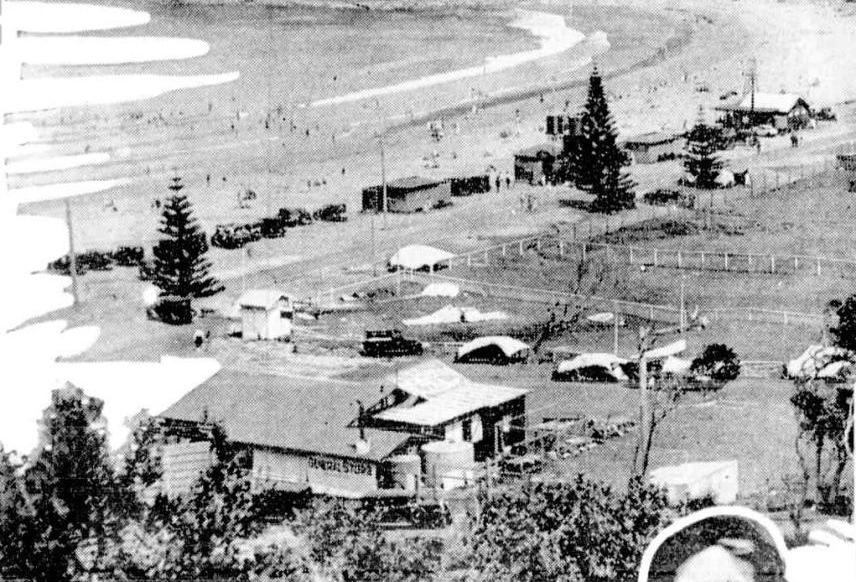
Alrema Samuels, a daughter of famous Australian writer Louis Becke, was year round resident at Palm Beach and a huge supporter of the surf club is one of the hosts of a boxing day dance at the 'Palladium' which shows that by year's end, the structure is in place.
I HAD A NOTE to tell me that the usual shorts and shirts parties — well, at least for the men folk — will be arranged again this year by the Palm Beach Surf Club, and the two dances will be held at the Palladium at this popular colony tomorrow night and New Year's Eve. Mrs Samuels, Rod Brown, Pete Hunter, and Adrian Curlewis are the leading lights behind the plans, and tickets may be procured from all club members at the club. CHRISTMAS 1932 (1932, December 25). The Sun (Sydney, NSW : 1910 - 1954), p. 20. Retrieved from http://nla.gov.au/nla.news-article230578167
NEAR AND FAR.
Three hundred visitors, many of whom motored from Sydney for the occasion, were present at the successful dance held at the Palladium, Palm Beach, last night, to raise funds for the Palm Beach Surf Life-Saving Club. Hosts and hostesses who are entertaining large house-parties took their guests to the dance, adding to the record attendance. Another dance will be held at the Palladium on New Year's Eve, with the same object. Mrs. A. Samuels and Mr. Burford Dawson, who were the hon. secretaries for last nights dance, are also arranging next Saturday's party. NEAR AND FAR. (1932, December 27). The Sydney Morning Herald (NSW : 1842 - 1954), p. 2. Retrieved from http://nla.gov.au/nla.news-article16941077
A KIND of farewell to Palm-Beach-night is being held tomorrow at the popular seaside resort. The event is really to raise more money to pay off the debt of the Surf Life Saving Clubhouse, which cost £170 to build. The Christmas and New Year dances realised £125 and the club members are holding the dance tomorrow night with the idea of attracting those people whose house-parties have already broken up, and those for whom the dance may be a final gay flutter — incidentally wiping off the balance of the debt. The Palladium, Palm Beach, will be the ballroom again. Brevities (1933, January 27). The Sun (Sydney, NSW : 1910 - 1954), p. 6 (CRICKET STUMPS). Retrieved from http://nla.gov.au/nla.news-article228913632
C.R. Wooden, 28/8/33, applying for permission to erect a Petrol petrol pump in front of "The Palladium" on the ocean beach at Rumps Palm Beach. Resolved, 4 That the Engineer inspect and decide whether permission should be granted. Crs. Hitchcock; Sterland
SLY-GROG SOLD AT PALM BEACH
FINE OF £30 IMPOSED
For selling liquor without a licence at the Palladium, Palm Beach, on November 11, Duncan Osborne, 57, storeman, was fined £30 or 60 days by Mr. Arnott, S.M., in the Metropolitan Licensing Court yesterday. SLY-GROG SOLD AT PALM BEACH (1933, November 21). The Labor Daily (Sydney, NSW : 1924 - 1938), p. 6. Retrieved from http://nla.gov.au/nla.news-article237909123
He was selling beer. The dances went on though:
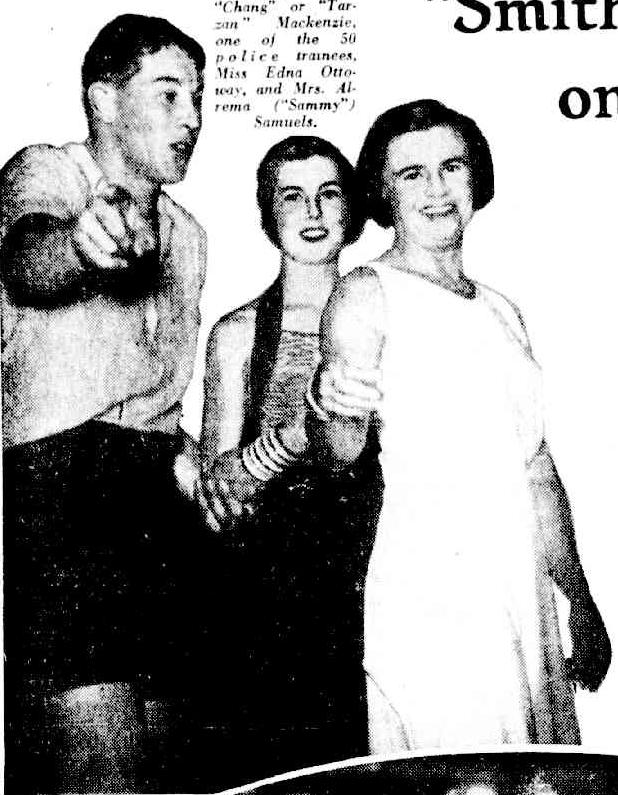
Warringah Shire council improvements:
October 11th, 1938
The SHIRE ENGINEER'S ADDITIONAL Supplementary REPORT was dealt with as follows:- ... 2. Palm Beach Parking Area - Suggesting a vote of £100 for extension of the parking area at Ocean Road in front of The Palladium; Resolved (Crs. Nicholas, Butcher) - That this be referred to the Works Committee.
October 3rd, 1939
Parking By Cr. Hitchcock - Will you direct that the Police Department be requested to agree to the erection of "No Parking" signs on the western side of Ocean Road between The Palladium and Governor Phillip Park? By Cr. Hitchcock Could the adjustment of the areas of the camping lots on Governor Phillip Park be expedited?
It was a place Whale Beach SLSC utilised for their annual events and fundraisers as well:
SURF BOAT DANCE
The Whale Beach Surf Club's social committee will hold a dance at the Palladium, Palm Beach, tonight, to raise funds towards providing the club with a surf-boat. SURF BOAT DANCE (1938, March 5). The Daily Telegraph (Sydney, NSW : 1931 - 1954), p. 19. Retrieved from http://nla.gov.au/nla.news-article247470278
WHALE BEACH SURFERS
Trophies won by Whale Beach Surf Life Saving Club members last season will be presented at the club's dance, at the Palladium, Palm Beach, tonight. The annual meeting will be held tomorrow, in the public dressing sheds, at 3 p.m. WHALE BEACH SURFERS (1940, October 5). The Daily Telegraph (Sydney, NSW : 1931 - 1954), p. 14. Retrieved from http://nla.gov.au/nla.news-article247610845
PALM BEACH THE PALLADIUM OCEAN ROAD Shop and Dance Hall - Cafe with small Dwelling at rear. Mortgagee sale. RICHARDSON and WRENCH LTD Auctioneers. Advertising (1943, September 30). The Sydney Morning Herald (NSW : 1842 - 1954), p. 1. Retrieved from http://nla.gov.au/nla.news-article17862881
August 29th, 1944 - Warringah Shire Council Minutes: J.E.Milton's proposed alterations at "The Palladium, Palm Beach, That approval be granted.
THEATERS AND PUBLIC HALLS ACT. 1908-1940.
PROCLAMATION.
(L.s.) F. U. JORDAN, Lieutenant-Governor.
If is hereby notified that Part II of the abovecited Act shall no longer apply to the premises specified in the appended Schedule, as such premises have ceased to be used for public entertainment purposes.
Signed and sealed at Sydney this 10th day of July, 1946.
By His Excellency Command - J.M. Baddeley
GOD SAVE THE KING!
...
Palm Beach, The Palladium.
THEATERS AND PUBLIC HALLS ACT, 1908-1940.—PROCLAMATION. (1946, July 26). Government Gazette of the State of New South Wales (Sydney, NSW : 1901 - 2001), p. 1695. Retrieved from http://nla.gov.au/nla.news-article224791391
With the 'dance hall' aspect of the Palladium gone the focus was on providing food and also general store supplies.
Johnny 'Super' Stewart, the famous speedway racer and Wallamatta Road, Newport resident, owned the restaurant in the building back in the early 1970s. Then it was called the 'Blue Pacific Restaurant'. It passed out of his hands in 1973-1974.
Some recall seeing surf movies at the Palladium during the 1980's and later in that same era - great parties. Today the iconic building is a private residence.
Further:
- Early Pittwater Surfers: Palm Beach I - Alrema Becke: Queen of Palm Beach
- Palm Beach Golf Course: Some History
A little extra exercise was all in the day's work to the Pat Levys, Ron and Nutty Mackellar, when they walked from Eleanora to Palm Beach to give their opinion on the new miniature golf links which have been mapped out on the Ocean Beach.
Scantily-clad figures are expected to play on these links in between bouts of surfing and sun-baking, for Palm Beach, always enterprising, must have its "minnie." . Barbara Listens In (1930, October 12). Daily Pictorial (Sydney, NSW : 1930 - 1931), p. 19. Retrieved from http://nla.gov.au/nla.news-article247192645
Buildings and works approved
Palm Beach.— Miniature Golf Links. — -A Vernon Allen, Palm Beach.
Palm Beach. — Septic Tank, Beach Road. — Mr. Houston's, Beach Road, Palm Beach.
Palm Beach. — Septic Tank, Florida Road.— C. Gow. MISCELLANEOUS (1930, October 29). Construction and Real Estate Journal (Sydney, NSW : 1930 - 1938), p. 2. Retrieved from http://nla.gov.au/nla.news-article130908050
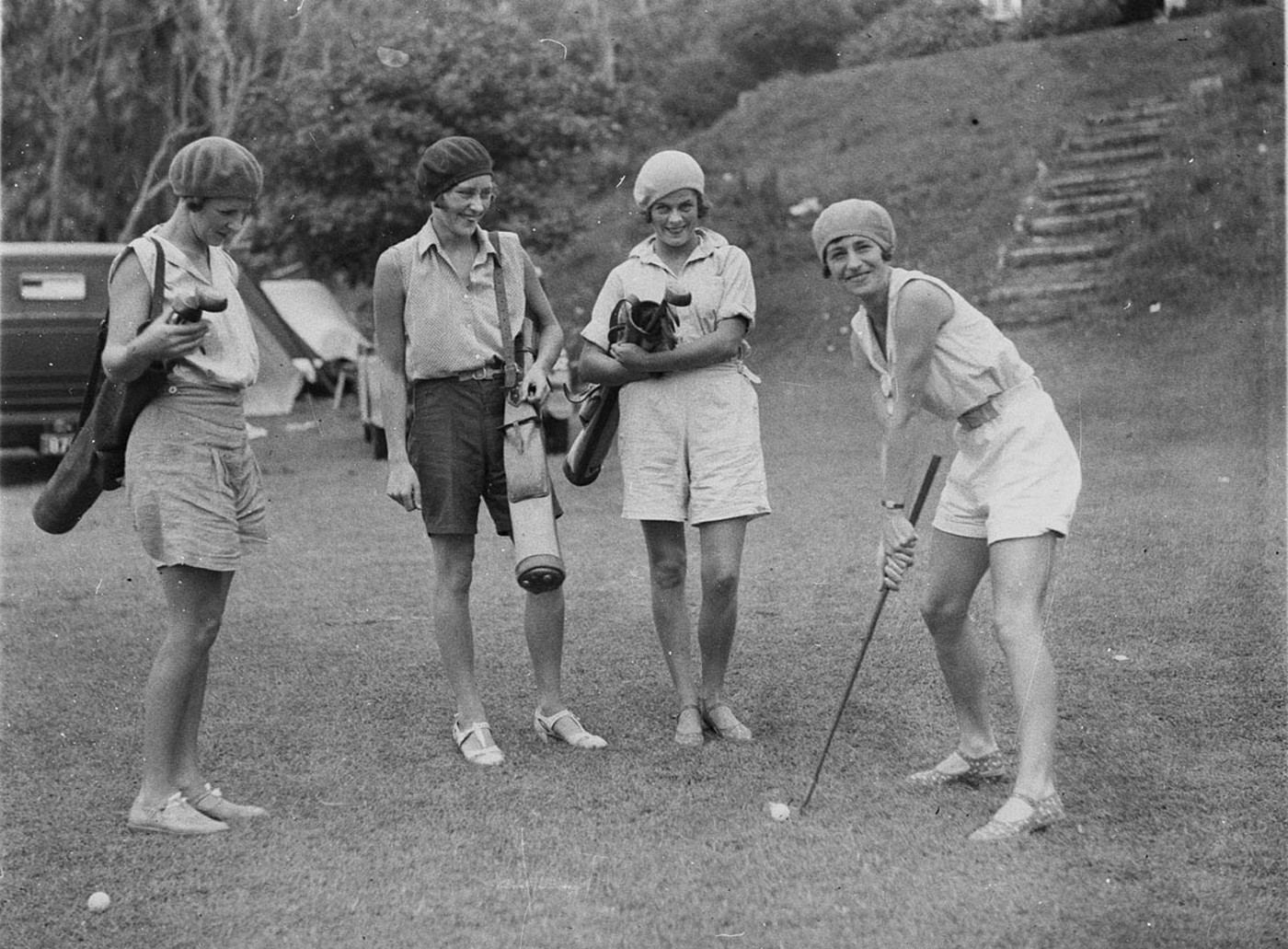
Palm Beach Again
PALM BEACH is setting new fashions in all directions, and the vogue is not confined to bathing togs alone. Sydney shrugged its shoulders when it learnt that society danced in. shorts during the season, and now comes word that the "gay young things" are sporting diminutive trousers on the golf links, in place of the usual very smart sports suit. Last week some very "fetching" ones made their appearance on this exclusive sports ground, and the fair wearers could not have been unconscious of the effect, when, in between dips they strolled to the links and played a round or two. Fancy! (1930, March 10). Daily Pictorial (Sydney, NSW : 1930 - 1931), p. 19. Retrieved from http://nla.gov.au/nla.news-article246125223

Bathers Surf Pavilion Palm Beach
Following on from the Palladium a plan was mooted in 1935 to build a structure in the same mien just opposite and down the road a bit from the popular dance hall. These upmarket surf sheds were built, in part, to stop visitors using any available bush as a toilet. Although opposed due to its site originally by the summer of 1936, the Palm Beach Surf Pavilion was open. The newspaper reports of the time covered the story:
SURF CLUB SITE IS OPPOSED
Council's Selection Not Suitable PALM BEACH
ALL the elements of a first-class row between the Warringah Shire Council and the Surf Life-Saving Association of Australia are said to be brewing owing to action over a site for a pavilion. The trouble has progressed to the stage of drawing In the State Government to prevent the building of the clubhouse on the site selected.
For some time the Warringah Shire has been progressively act in the erection of surf pavilions and accommodation for bathers on the many beaches in Us area, which extends from north of North Steyne to the Hawkesbury River, and includes such popular resorts as Freshwater, Curl Curl, Dee Why, Collaroy, Narrabeen, Newport, Mona Vale and Palm Beach, all of which have Surf Life Saving Clubs, and most of which have surf pavilions, all-being free of charge to the public.
Costly Building
Recently, the council decided to erect a surf pavilion and accommodation at Palm Beach, at a cost of £4000, thus making the pavilion one of the finest along tho coast. The councillors selected the site themselves, but the Palm Beach Surf Club did not agree with the selection, and entered a protest. After considering the letter from the club, tho council refused to accept their suggestion and decided that the work must proceed. Then the rift began to widen. The club decided to seek the aid of the Surf Life saving Association, and when the matter came before the executive committee it was referred to a special sub-committee, consisting of Messrs. Burke, Doyle, Dargin, Whitehead and Rathbone, to make a detailed Inspection of the site and others that might be offering, and report back.
A special meeting of the executive was held yesterday to consider the report, which strongly favored the site selected by the Palm Beach Club. It was decided to adopt the report. It was stated that the council's site was most unsuitable, being about 600. yards from the rock pool, where channels of a dangerous nature were continually forming. It was decided to forward a copy of the report to the Minister for Local Government, Mr. Spooner, and request him to intervene and prevent the erection of the pavilion on the. site selected by the council. It was further decided that a suggestion be made to the Minister that an advisory committee be appointed from the Surf Life Saving Association to assist or advise the Government and councils in the selection of sites for club premises of surf pavilions, an the members of the association were most fitted to give such advice. SURF CLUB SITE IS OPPOSED (1935, June 27). The Labor Daily (Sydney, NSW : 1924 - 1938), p. 9. Retrieved from http://nla.gov.au/nla.news-article237490400
PALM BEACH SURF pavilion
PROGRESS ASS. SUPPORTS CLUB & ASSOCIATION
The executive committee of the Surf: Life Saving Association, which met yesterday afternoon, again had before it the matter of the Palm Beach Surf Club pavilion and accommodation for bathers. On June 1 last the Palm Beach Progress Association passed a motion favoring the site for the erection of a pavilion objected to by the Palm Beach Club and the Surf Life Saving Association. On July 6, the Progress Association carried a number of resolutions that they now disapproved the site selected by the Shire Council for the public sheds and surf club buildings, that the executive committee call a special meeting of members, to be held on August 10, to rescind the previous motion of June 1 approving the site, and requesting the Warringah Shire Council to delay action until the Minister for Local Government had given a decision on the matter. The Progress Association also expressed its utmost confidence in the Palm Beach Surf Life Saving Club. The letter was received, members of the executive expressing their pleasure that the Progress Association had seen fit to fall In behind the Surf Club and Surf Life Saving Association. No reply had yet been received from the Minister for Local Government, Mr. Spooner, to the request of the association that he refuse permission to the council to erect the buildings on the site selected. PALM BEACH SURF PAVILION (1935, July 9). The Labor Daily (Sydney, NSW : 1924 - 1938), p. 8. Retrieved from http://nla.gov.au/nla.news-article237486203
PALM BEACH.
Inquiry Into Surf Pavilion Proposal.
A local government inquiry into the proposal of the Warringah shire council to borrow £4600 for a surf pavilion and parking area at Palm Beach was held yesterday - at the council chambers, Brookvale. Mr. E. R. C. Gallop conducted the inquiry.
Councillor Austin (president of the shire), in evidence, said it was proposed to spend about £3500 on the pavilion and £1500 on the parking area. The council's policy was to erect new buildings on the beaches, in place of dilapidated structures. Palm Beach was a popular resort, for which something better was needed. A previous proposal was abandoned because of dangers to pedestrians crossing the road at the old location. There was not enough room there for the proposed building, except at the cost of a retaining wall.
Evidence in support of the proposal was given by Councillor Hughes, ex-Councillor Hitchcock, Mr. T. S. McKay, and others.
Mr. Adrian Curlewis (president of the Surf Life Saving Association) opposed the council's choice of location at the northern end of the beach on the ground that it was more dangerous than the present site. He was supported by Messrs. K. Hunter and Conroy, of the Palm Beach Life Saving Club. The latter stated that if the pavilion was placed at the northern end the club would cease to function.
The Commissioner said he would send his report to the Minister. PALM BEACH. (1935, September 27). The Sydney Morning Herald (NSW : 1842 - 1954), p. 16. Retrieved from http://nla.gov.au/nla.news-article17205059
PALM BEACH SURF PAVILION.
The new surf pavilion at Palm Beach, opened on Saturday by the Minister for Works and Local Government (Mr. Spooner), was the ninth of these buildings erected on the beaches in the Warringah Shire during the past two years. The total cost to the shire council of these was more than £25,000. The Palm Beach pavilion cost £3800, which included £1000 for the foundations and sea wall. Of an appearance unusual on the metropolitan beaches. It was planned according to the most modern ideas. A spacious vestibule In the centre is flanked by the dressing quarters, with circular walls, giving to the general design an attractiveness quite in keeping with the modern bungalows around this popular resort. The interior arrangements are compact, providing space sufficient to accommodate 200 bathers. A wide promenade runs along the whole of the frontage.
Mr. Lindsay G. Scott was the architect, end Mr. T. Lockhart, of Newport, the builder.
“Dressing sheds of ample proportions are provided at either side of the vestibule.
“Accommodation, with lockers, is available for 200 of each sex.
“Every consideration has been given to the general comfort and requirements of surfers.
PALM BEACH SURF PAVILION. (1936, December 15). The Sydney Morning Herald (NSW : 1842 - 1954), p. 3. Retrieved from http://nla.gov.au/nla.news-article17293648
BUILDING AND CONSTRUCTION
PALM BEACH,
Attractive Surf Pavilion
Warringah Shire Council has 13 beaches under, its control. These stretch from the boundary of the Manly municipality to the Hawkesbury at Barrenjoey. On each of the 13 beaches satisfactory provision ls made for public requirements. The most attractive of all the council's pavilions is that recently opened at Palm Beach.
This building is architecturally pleasing. It is commodious, and does not detract from the beach space available to the public. The building ls 156ft by 40ft, one story In height. It can be entered from either the promenade or the beach. There ls a spacious vestibule, In which are turnstiles which automatically register the number of persons using the sheds. Entrance and exit to the pavilion are so arranged that they can be easily controlled and. directed by one attendant.
Arrangements have been made for the sale, or hire, of costumes and other bathing requisites in the vestibule. Dressing sheds of ample proportions are-provided at either side of the vestibule. Accommodation, with lockers, is available for 200 of each sex. Pro-vision is made for fresh-water, showers, There ls an adequate system of septic sewerage.
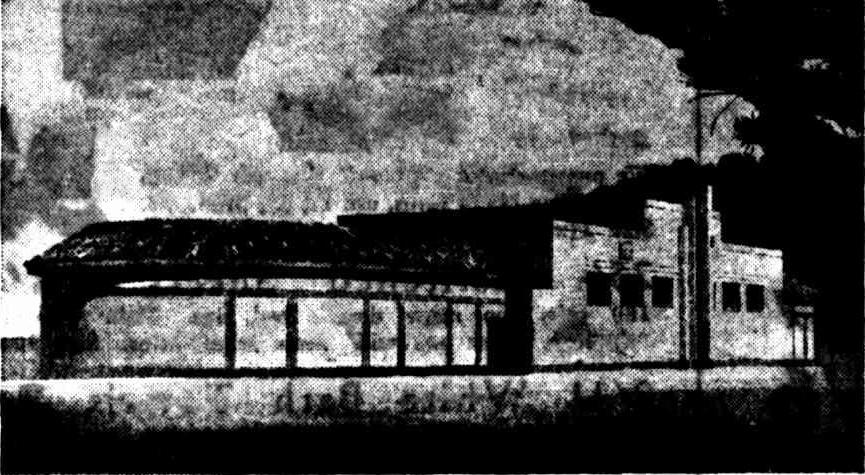
NEW SURF PAVILION AT PALM BEACH.
Every consideration has, been given to the general comfort and requirements of surfers, The building, as shown in the illustration, has beer, designed on modern lines. The walls are off white bricks with raked joints. The roof is covered with multi-coloured semiglazed Spanish tiles. A wide promenade surrounds the building. There is a sea wall on the ocean side, with steps at either end leading to the beach.
The building was erected by T. Lockhart, Newport. The plans and supervision were by Lindsay G. Scott, architect, Sydney. BUILDING AND CONSTRUCTION PALM BEACH. (1937, January 5). The Sydney Morning Herald (NSW : 1842 - 1954), p. 8. Retrieved from http://nla.gov.au/nla.news-article27988699
North Palm Beach SLSC Members in front of the surf Pavilion and showing the seawall and prior to steps being installed - circa 1938-39:
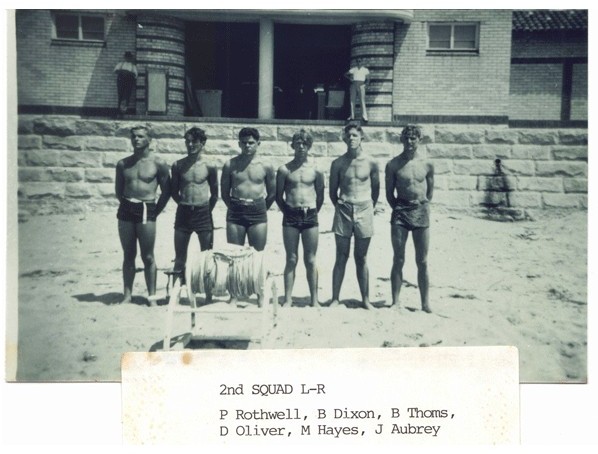
NORTH PALM BEACH –Senior beach sprint K Hardaker 1 J Mann 2 N Fairley 3 Musical flags N Fairley 1 D Oliver 2 R Watson 3 Wheelbarrow race R Watson J Mann 1 N Fairley K Hardaker 2 B Lappan J Semmens 3 Junior beach sprint B Lappan 1 R Wilson 2, B Savage 3 Relay race K Hardaker’s team 1 N Fairley’s team 2 Obstacle race R Watson 1 J Mann 2 J Semmens Stick race J Semmens B Savage 2 K Hardaker 3 Chariot race J Semmens’s team 1 J Mann’s team 2 SPORT DETAILS. (1950, November 6). The Sydney Morning Herald (NSW : 1842 - 1954), p. 7. Retrieved from http://nla.gov.au/nla.news-article18184693
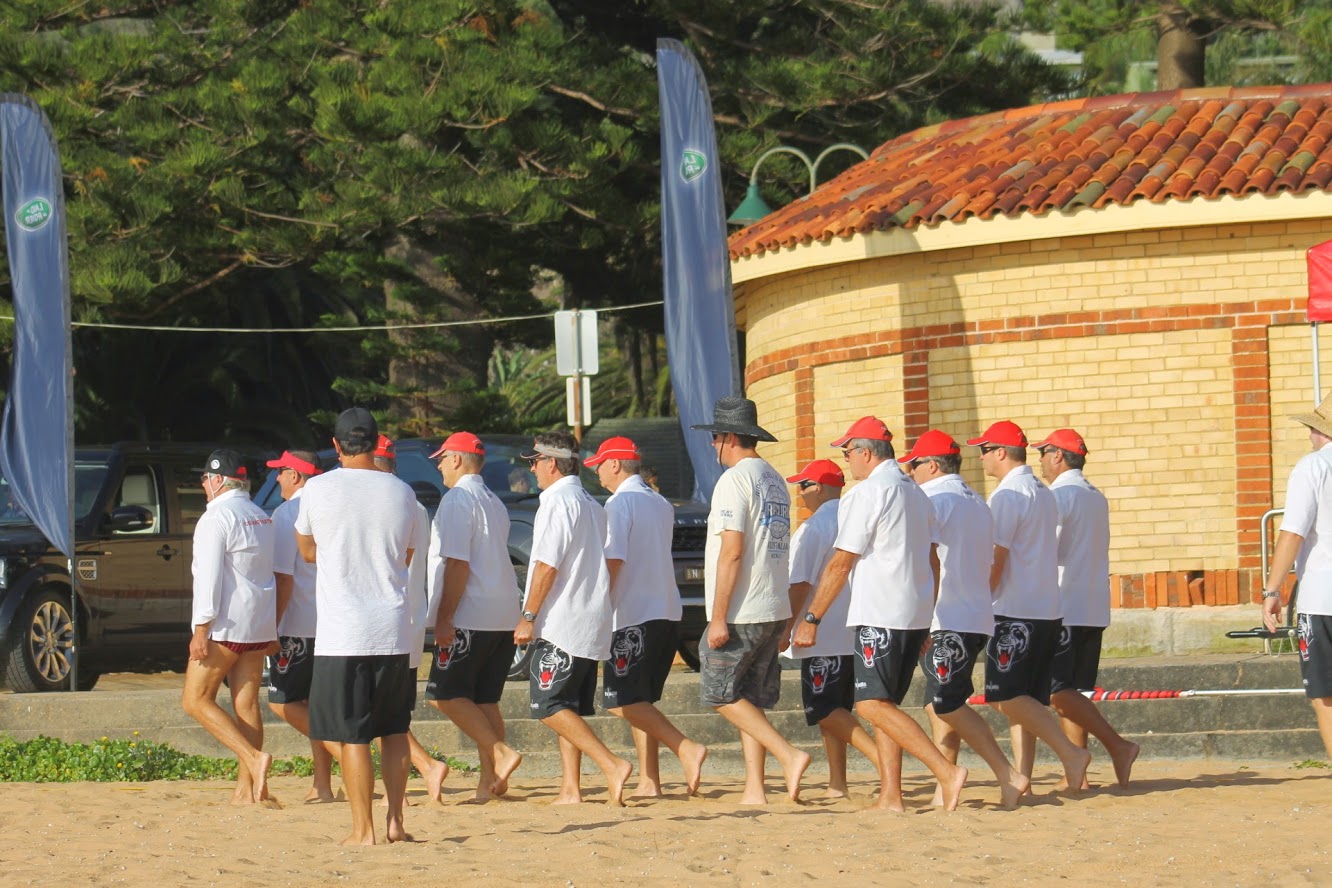
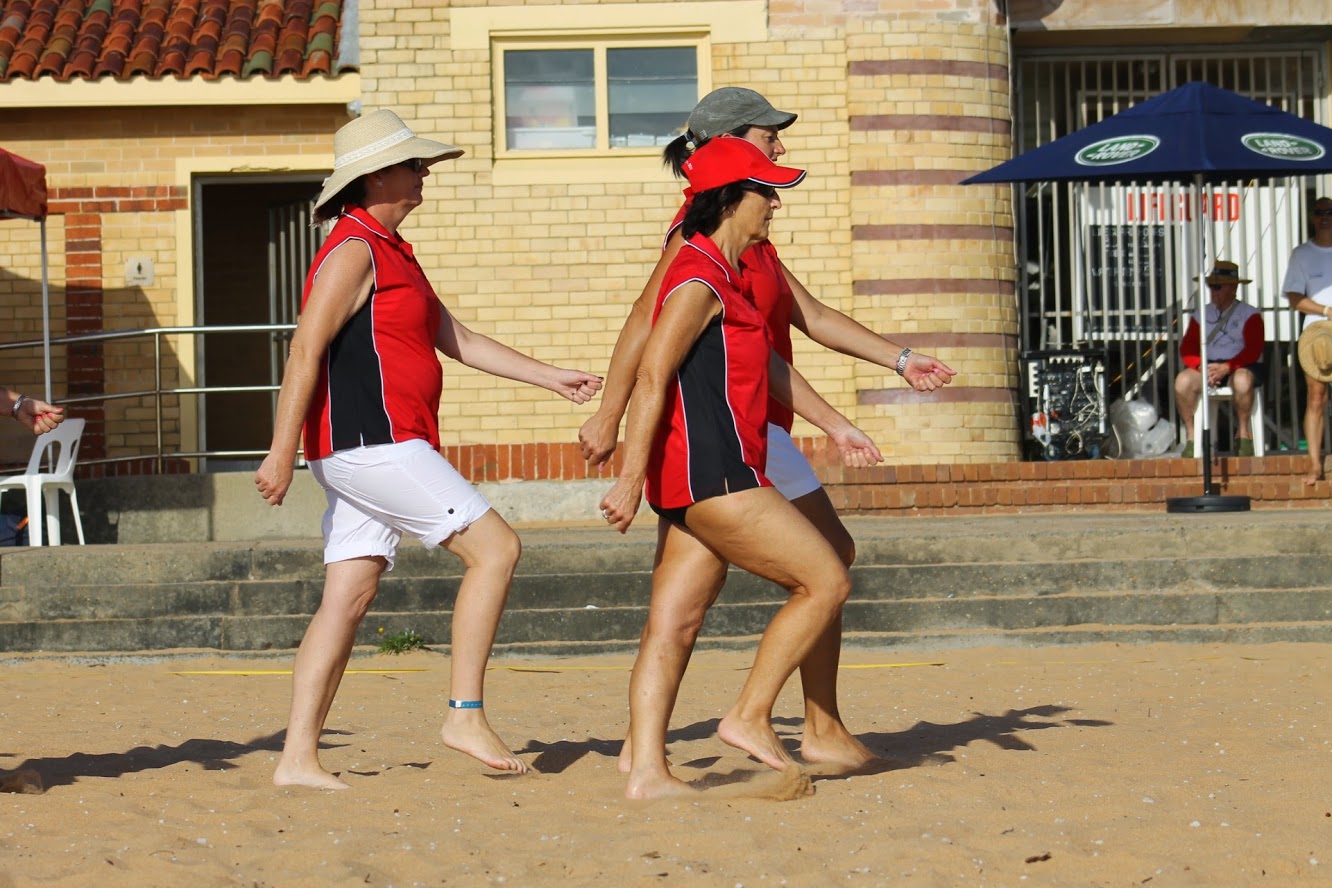
Prior to this, other public buildings were designed by Mr. Scott:
MASONIC HALL, LEICHHARDT.
From plans by Mr. Lindsay G. Scott, architect, and under his supervision, a new Masonic Hall has been erected in Marlborough-street, Leichhardt. The contractor was Mr. F. W. Hickey. The building is a pleasing addition to the architecture of the district. Owing to the fall of the land it was possible to erect a large hall, with cloak rooms, kitchen, etc., at one level, and the hall above on another level. The lodge-room, with its seating for 250 members, together with ante-rooms and office accommodation, is on the upper floor, which is approached by a flight of steps from the street. The facade has been treated in a classical manner, which is suitable for this class of building. With its cluster of columns, cornice, and parapet, it has a dignified appearance. The hall will be used by the lodge. MASONIC HALL, LEICHHARDT. (1925, June 17). The Sydney Morning Herald (NSW : 1842 - 1954), p. 8. Retrieved from http://nla.gov.au/nla.news-article16226336
Scott, Lindsay Gordon, c/o Ross and Rowe, 14 Castlereagh-street, Sydney ARCHITECTS' ROLL OF NEW SOUTH WALES FOR YEAR 1931. (1931, January 30). Government Gazette of the State of New South Wales (Sydney, NSW : 1901 - 2001), p. 516. Retrieved from http://nla.gov.au/nla.news-article220236050
OBITUARY.
MR. LINDSAY G. SCOTT.
Mr Lindsay Gordon Scott, well-known architect, died suddenly at his home in Manly at the age of 42 years.
A native of Grafton, he gained the Diploma of Architecture at the Sydney Technical College and practised his profession in Sydney and suburbs where a number of public buildings were designed by him.
Mr. Scott was honorary architect for the New South Wales Surf Life-saving Association and also for a number of surf clubs. He was captain of the Freshwater Surf Club and a member of Cromer Country Golf Club.
His other civic activities included the presidency of the Manly Chamber of Commerce and member-ship of the Manly Rotary Club. He was Past Master of Masonic Lodge, Annandale.
The funeral service at the Manly Presbyterian Church, was attended by representatives of the Manly and War-ringah Councils, Chambers of Commerce, Masonic fraternity, and other public bodies.After the service thee funeral proceeded to the Northern Suburbs Crematorium. OBITUARY. (1941, January 11). The Sydney Morning Herald (NSW : 1842 - 1954), p. 7. Retrieved from http://nla.gov.au/nla.news-article17722340
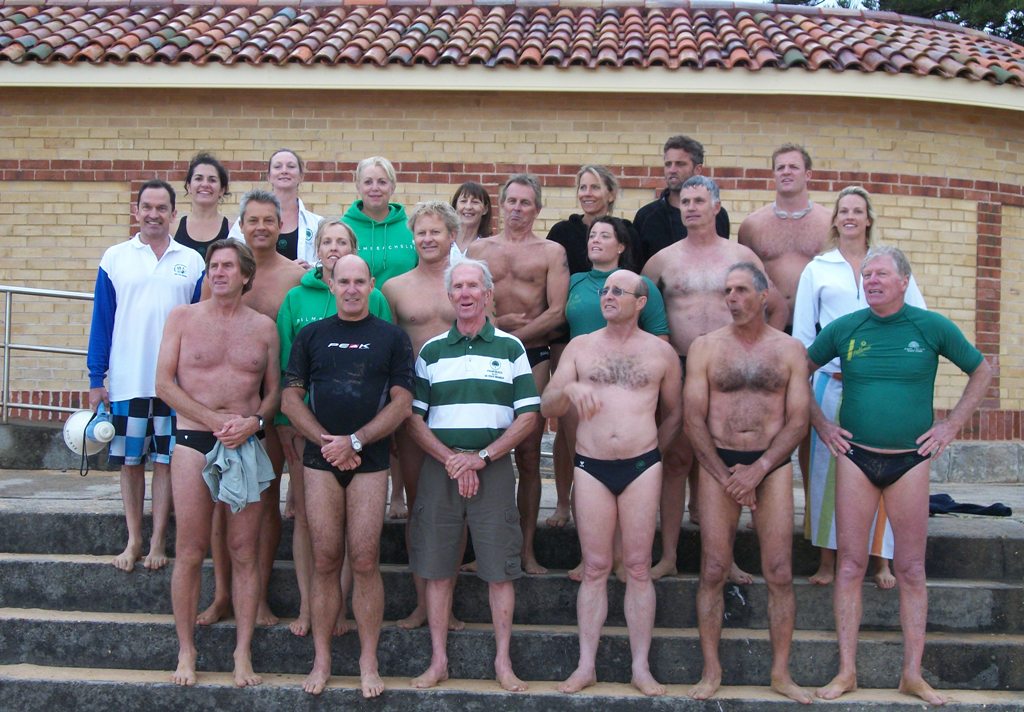
Ocean facing side of Palm Beach Surf Pavilion in January 2019
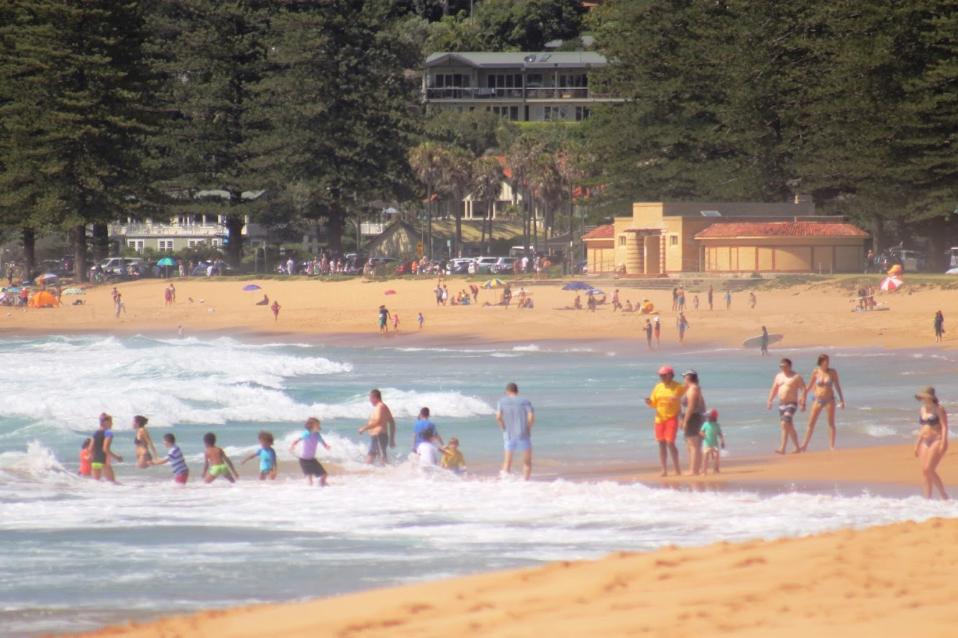
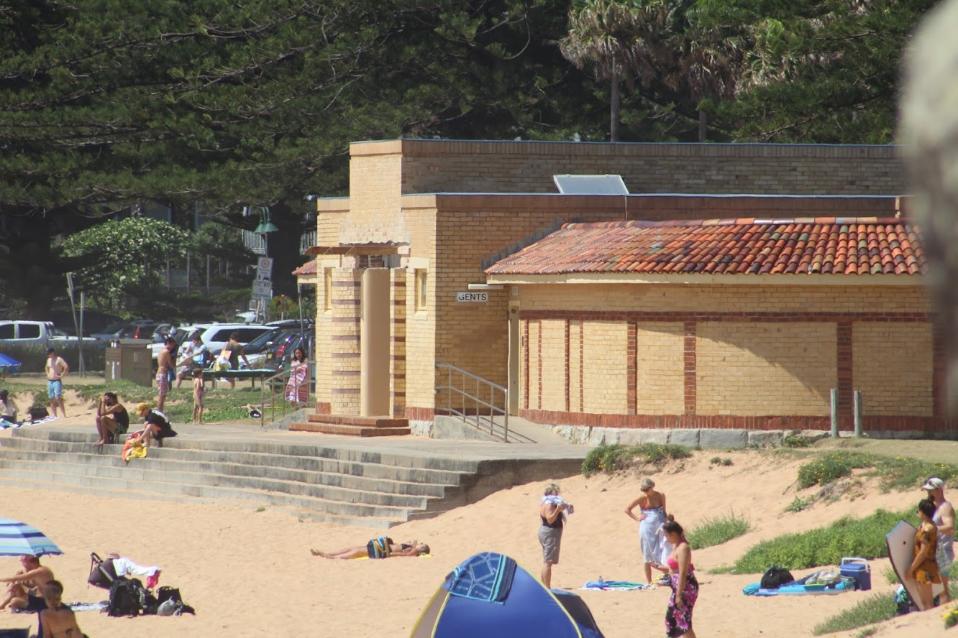
The Beacon Store
In February 1930 T. Gonsalves was requesting permission from Warringah Shire Council to erect six shelters on Governor Phillip Park in the vicinity of his Store (this later became known as The Beacon Store). The shelters may have been similar to those built at what was then The Rendezvous to serve afternoon teas in - groceries were sold from the corner of the home situated opposite the golf course:
From Warringah Shire Council minutes of meetings:
Claude Neon Ltd., 30/3/40, applying for permission to erect at H.F. Gonsavles' "The Beacon Store", Palm Beach, a single-faced horizontal box sign bearing the words "TIM'S CAFE" on both sides, 16 ft. long and 2 ft. high. Resolved, - That approval be granted.
The 18th Battalion which were stationed on Barrenjoey Headland during WWII used to report in to headquarters from a telephone at the Beacon Store.
A few examples of works required courtesy of Warringah Shire Council minutes:
12/12/1960: Mr. Warwick Kells, c/- Post Office, Palm Beach, 29/11/60 - requesting permission for the P.M.G's Department to run a telephone cable from the Beacon Store in Governor Phillip Park to the beach on the Pittwater side, where a submarine cable will then be buried in the sand below water level; adding that the request is in connection with a telephone service at Barrenjoey Lighthouse. Also stating that the application was recommended by the Police Department, and has been approved by the P.M.G. subject to Council's written concurrence. 46.Resolved - That this matter be referred to the next meeting of the Works Committee with a report thereon from the Engineer. (Crs. Fisher/Bertram.)
The store housed the first version of the North Palm Beach Surf Lifesaving Club, founded by campers and members of the nearby golf club, until its dissolution during WWII – after which it moved to a site near its present location.
The camping ground grew in popularity and had over 180 campsites by the mid-1950’s. With the activity causing a large amount of erosion on the site, the council took measures to control the use of the area and the campsite was eventually closed in 1972 - by 1975 all the tents were gone.
![]()
Beacon Store in 1988 ©and courtesy Martin Brannan
Over the next decade the Beacon Store deteriorated. By September 1988 Council that the building should be vacated within a month and immediately demolished. By this time the popular television show Home and Away had been using the exterior of the store for a year and it had become part of the Summer Bay community and storylines.
On hearing the news about the upcoming demolition the Seven Network contacted the council with a proposition. If the council were willing to give the store a stay of execution, Seven would take on a 4 month lease at a rate of $200 a week from November 1988. During this time they would work the store’s demolition into their storylines - and it would be burnt down.
Council agreed to this. In March 1989 the Beacon Store went out in a blaze of glory, both on-screen and off-screen and the series filmed the store’s demise.
The site has now been landscaped and become part of the surrounding parkland and picnic area, with no trace of the former building remaining.
This brief look into the Art of architecture ala Art Deco, would not be complete without some art about one of those buildings of course - and this one comes from then resident of Palm Beach, the brilliant Tony Edwards:
The Beacon Store - Palm Beach - by Tony Edwards
Hard to imagine that Palm Beach was quite a scruffy place till relatively recently. This one was opposite the Beachhouse Cafe, knocked over in the eighties. Their specialities ? Paddle pops and coke, served with a scowl. - Tony Edwards
A few insights on the Barrenjoey Boatshed courtesy of Russell Walton, son of Captain Victor Walton:
My father purchased the boatshed lease off Aub Allen in 1975. My father passed away about 20 years ago and then myself and my mum, Carmel Walton, ran it up until about six years ago when Greg Freemore bought it. My father also started Aquatic Airways back in 1975. I started my business up there, Barrenjoey Boating Services, which was hire boats and barges, and almost 19 years ago now. He also had the Beacon Store – the shop across the road from the boatshed. Tom Preisovich had this originally.
Further:
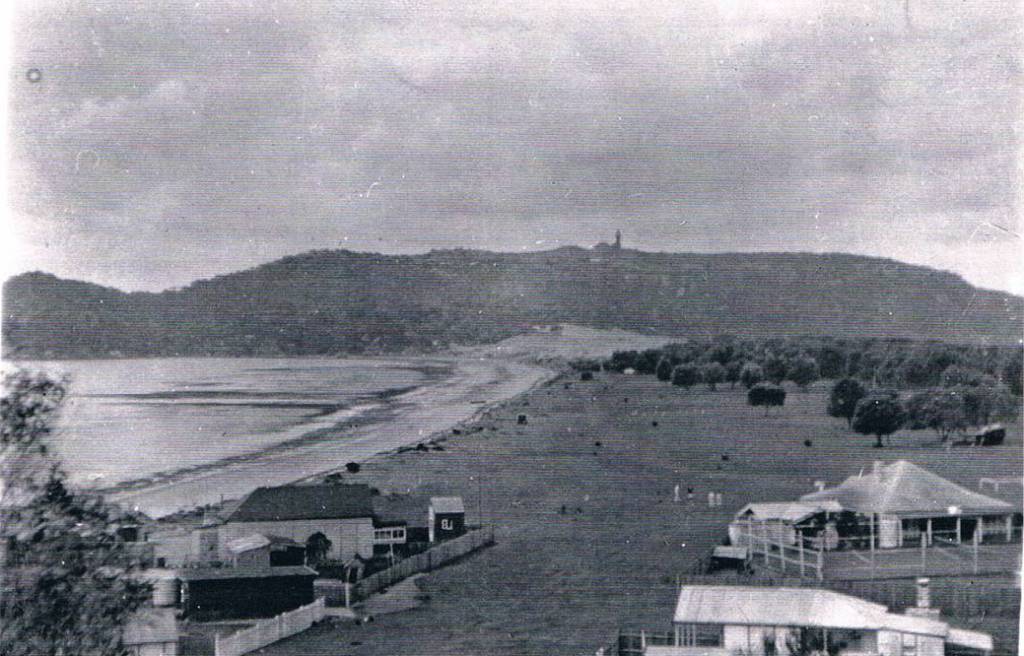
Palm Beach Golf Course from Verrills Family Albums. Circa 1929-1930. Courtesy Peter Verrills.
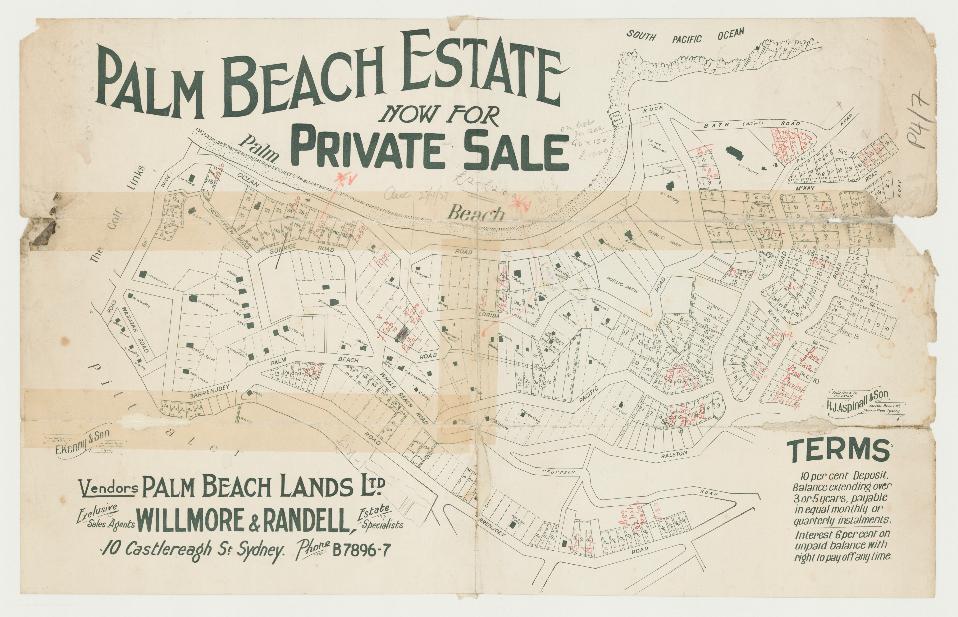
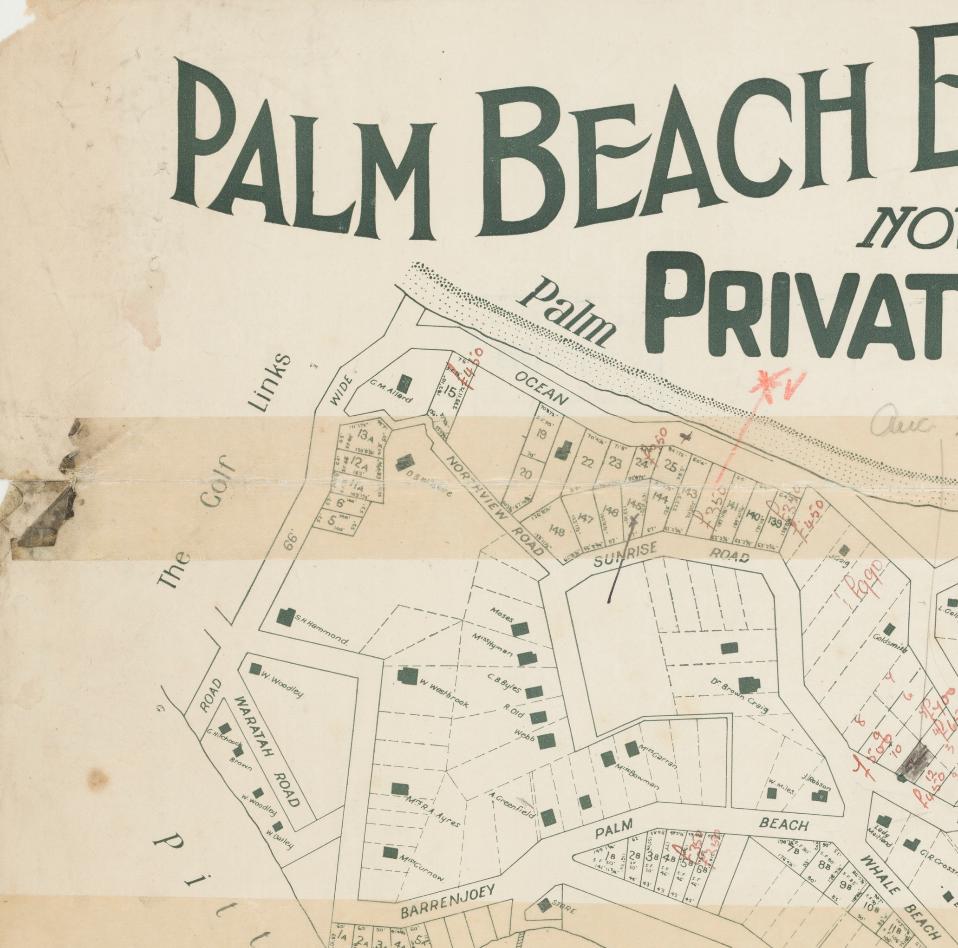
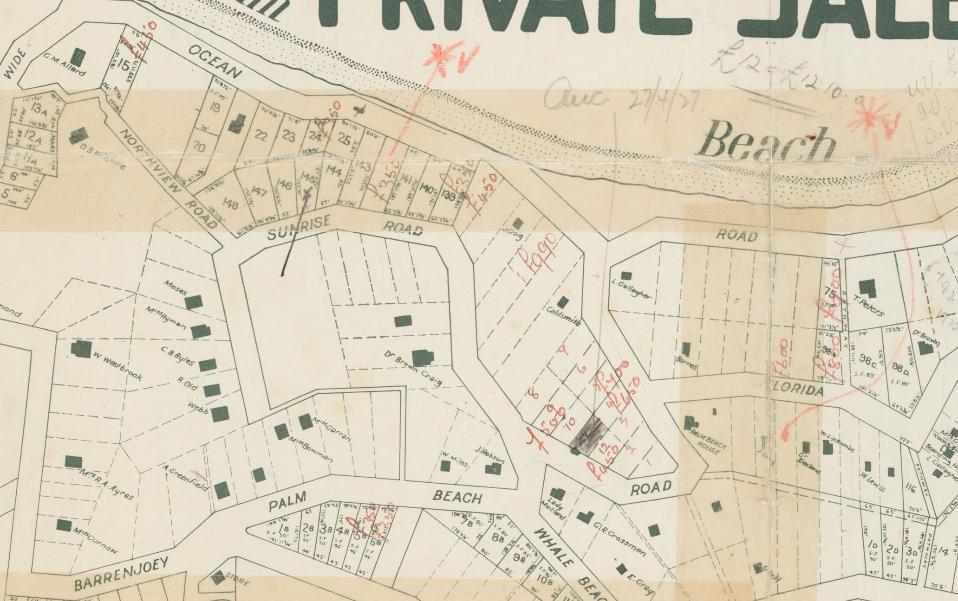
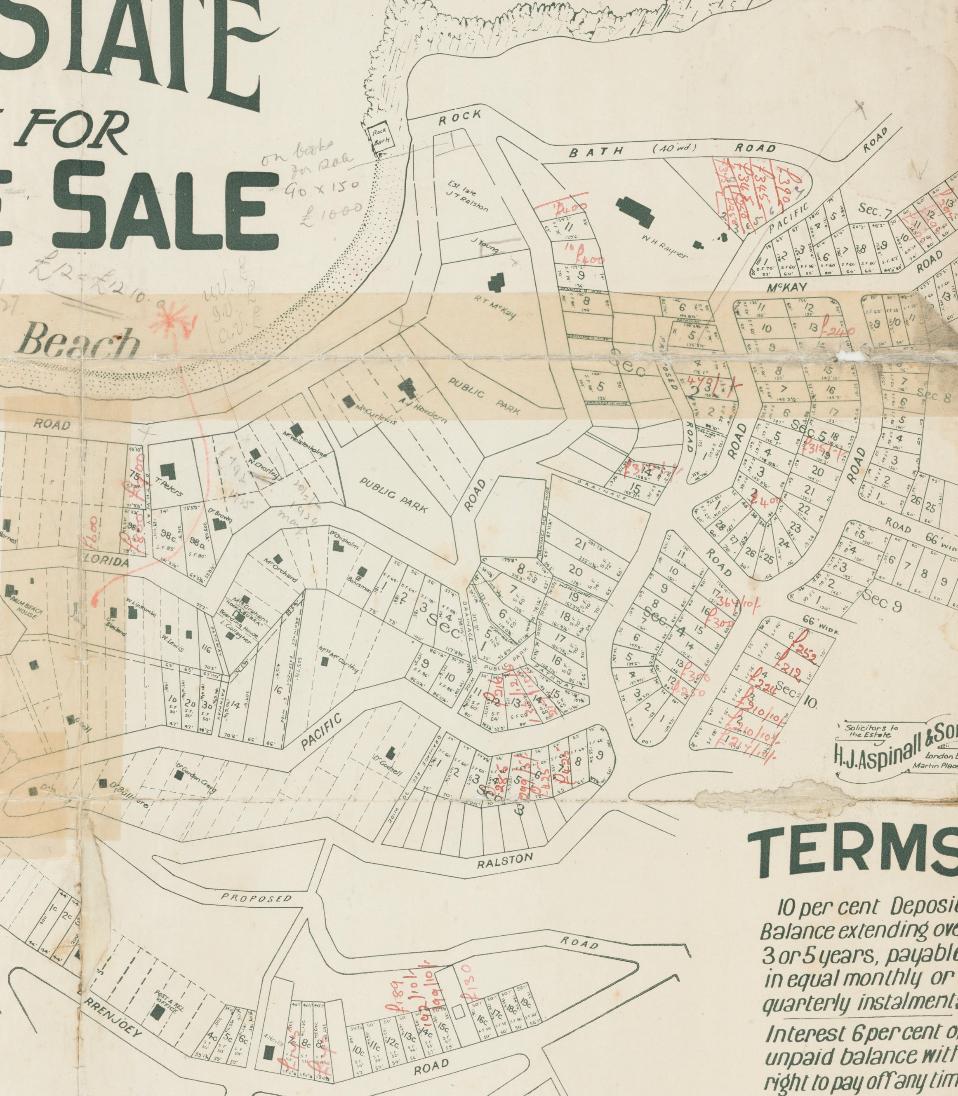
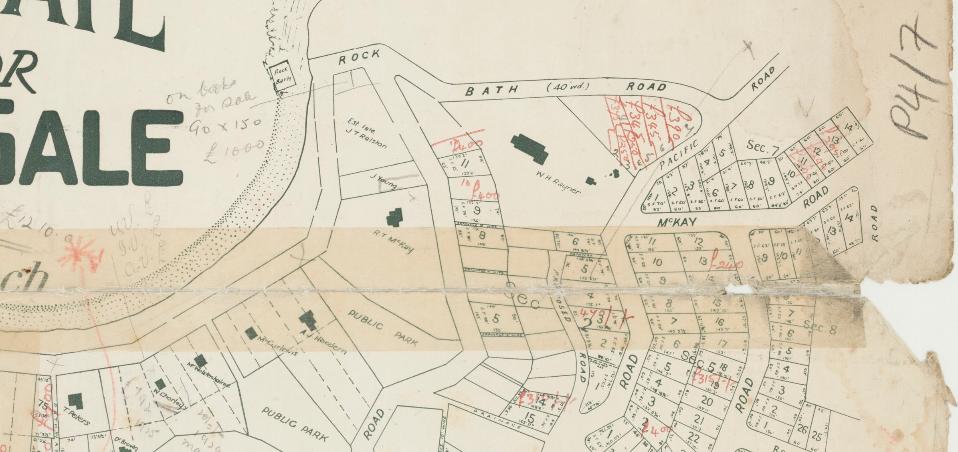
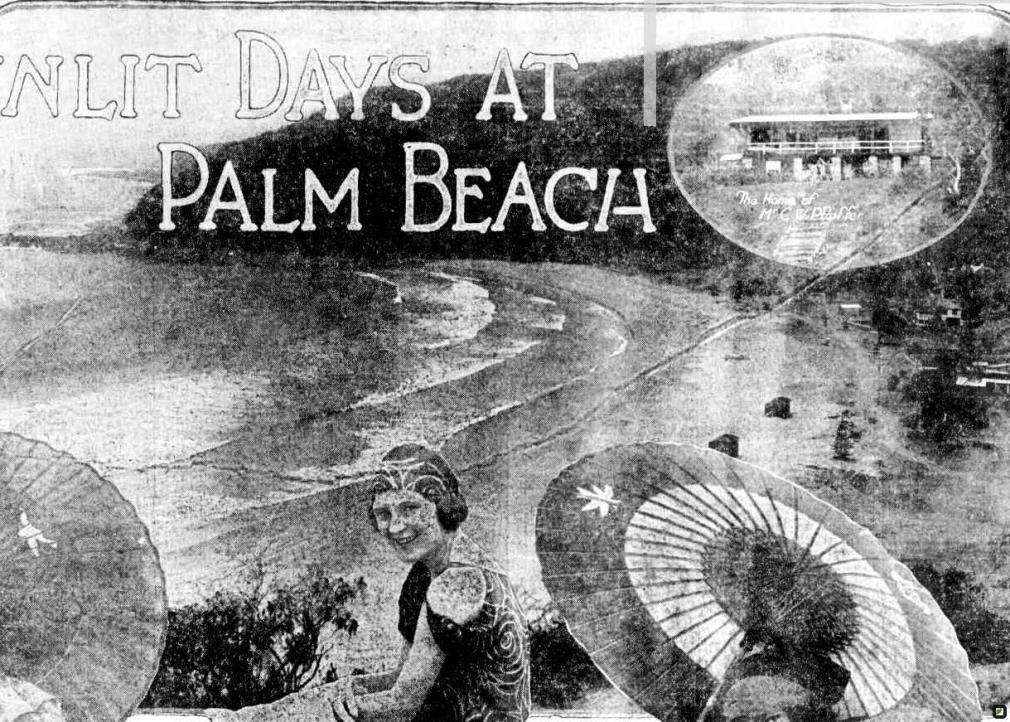
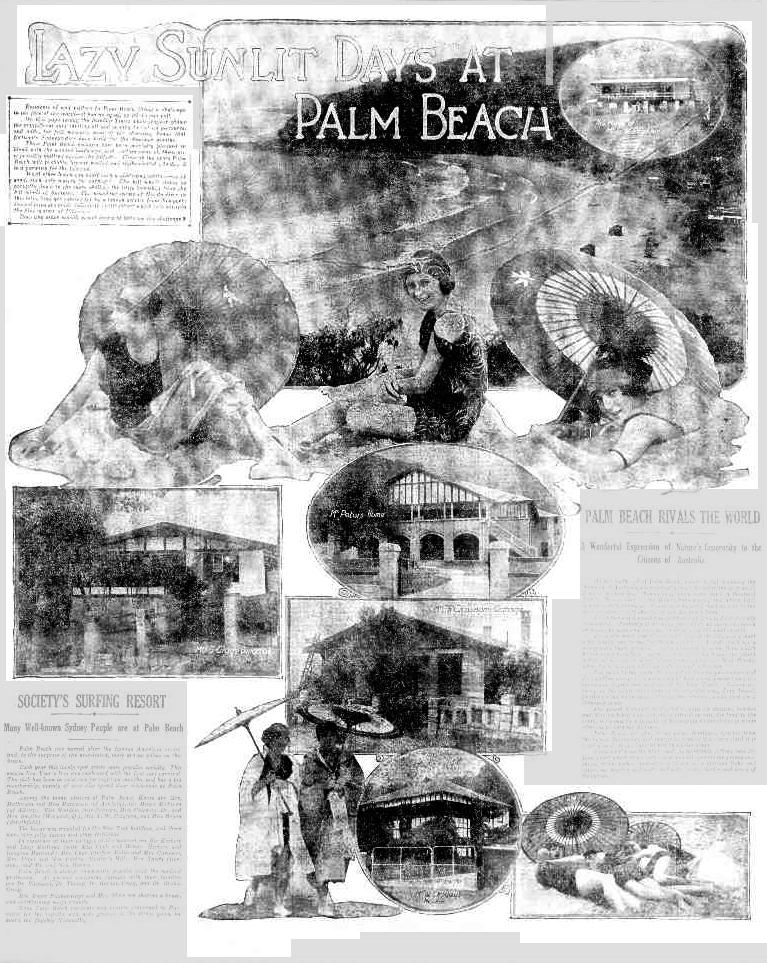
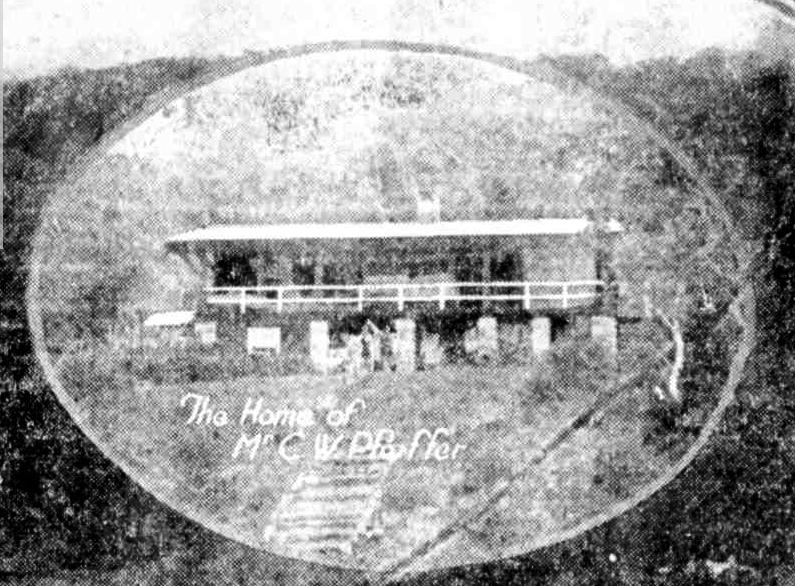
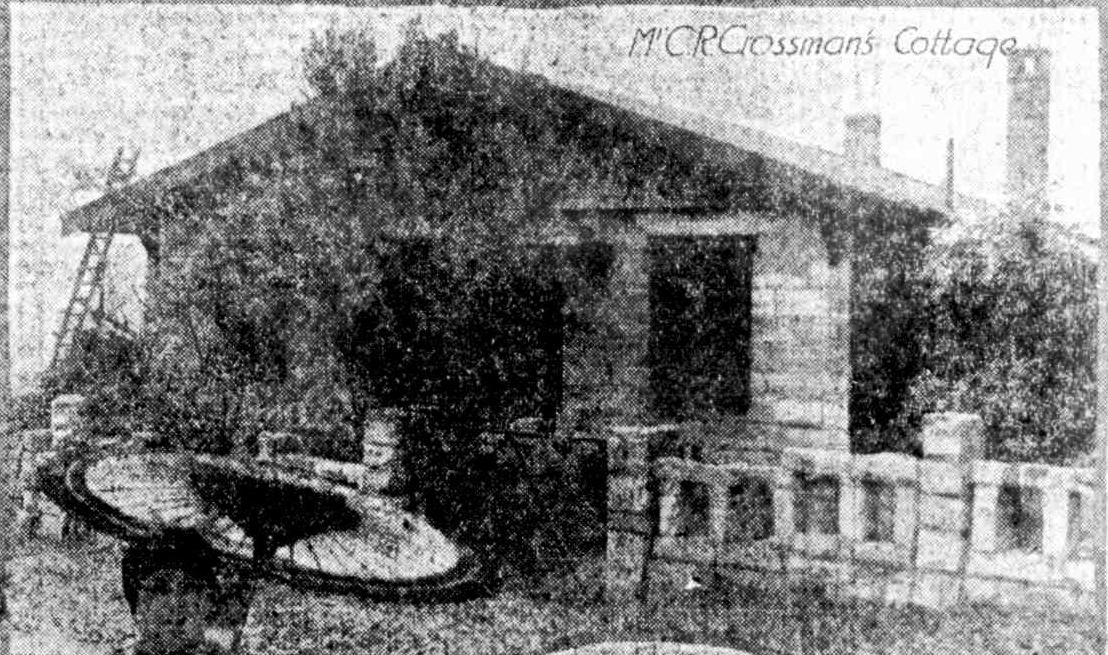
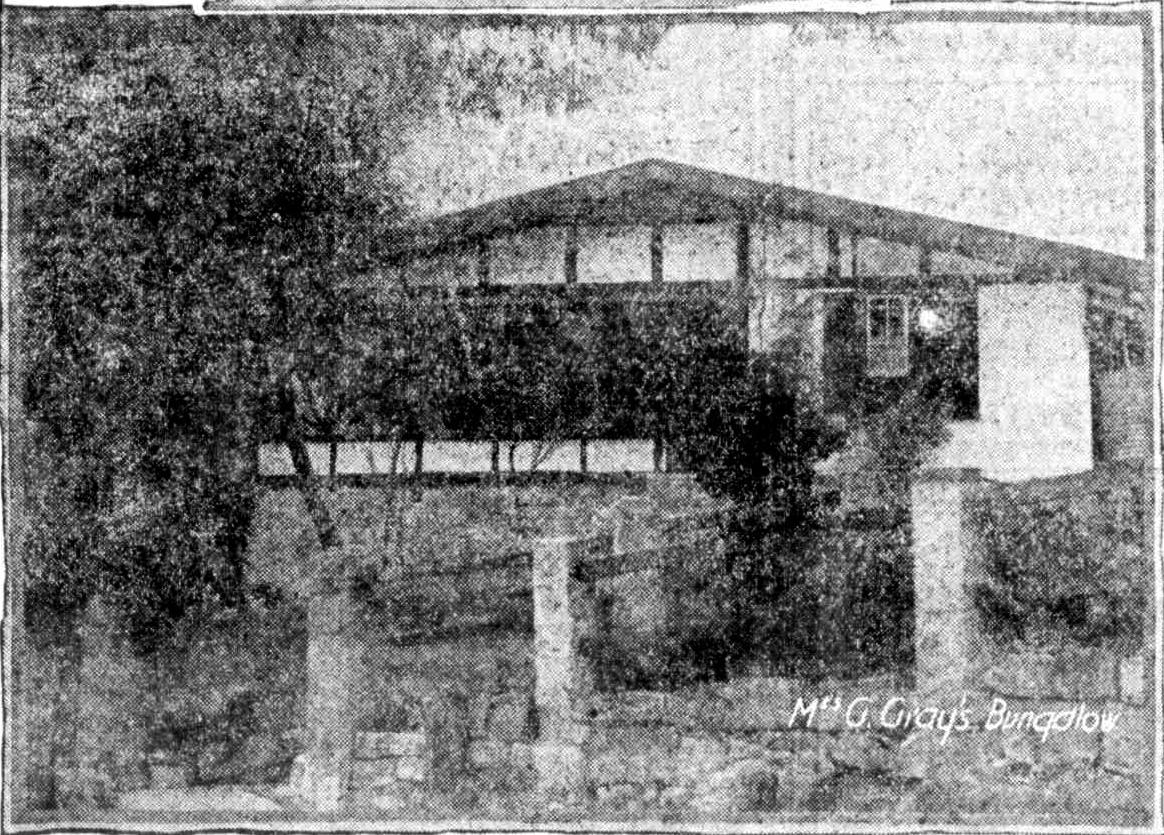
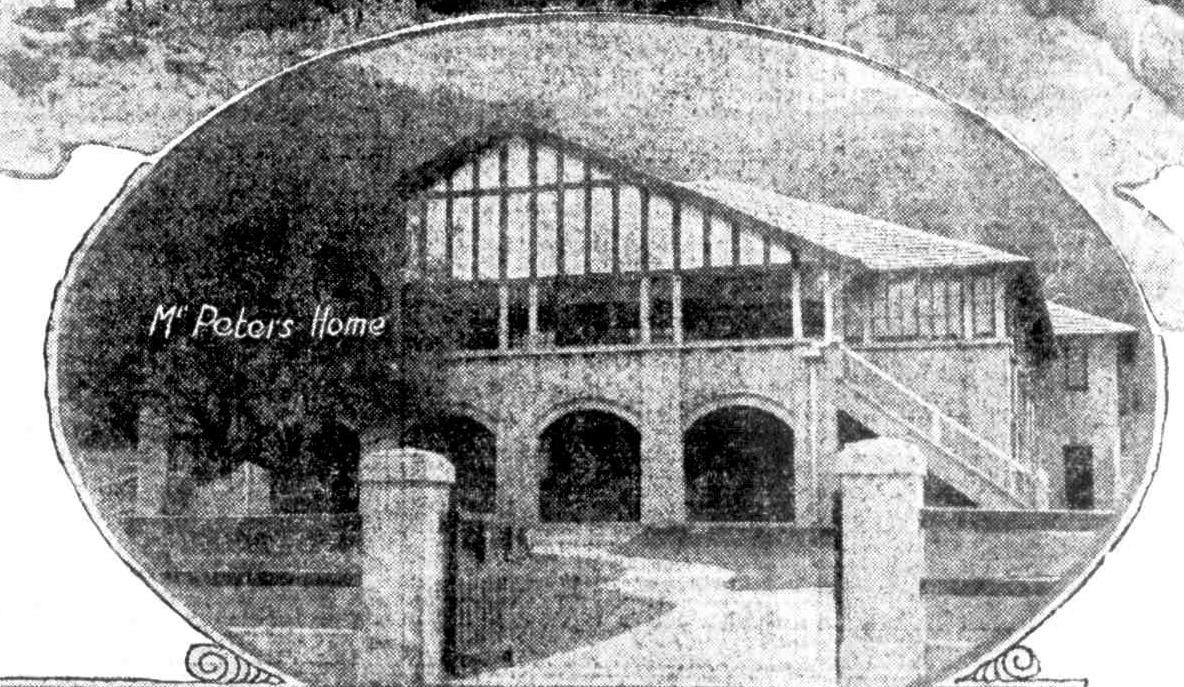
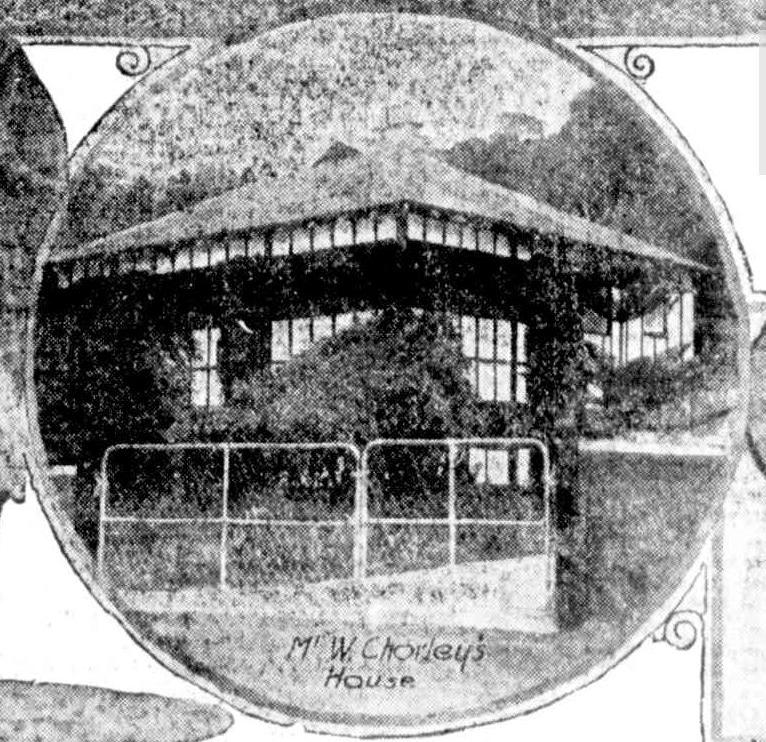
References And Extras
1. TROVE - National Library of Australia
2. Warringah Shire Council - Minutes of Meetings
3. Art Deco - Wikipedia
SHIRE OF WARRINGAH.
Special Loan, £21,000—"A'' Riding.
WARRINGAH Shire Council hereby gives notice, in accordance with the provisions of Local Government Act, 1919, that:—
1. The Council proposes to raise a Special Loan of twenty-one thousand founds (£21,000) for the purpose of carrying but in Biding "A" of the Shire certain public works, the acquisition of certain lands for public recreation purposes, and the acquisition of certain lands for road purposes; and for the purpose of paying expenses incidental to the carrying out of such works and acquisitions.
2. The Council proposes to expend the loan money as follows, but reserves the right to utilise the surplus or saving on any one item in paying the excess cost of any other:—
(a) In Palm Beach-Whale Beach District:
Public Reserve on shore of Pittwater, Palm Beach — Filling, levelling, and construction of retaining wall 1,000 Ocean Beach Reserve, Palm Beach—Making parking area and constructing pipe-line in southern portion 250 Governor Phillip Park — Erection of public lavatories 500 New Wharf—Construction of, at Palm Beach, Pittwater side 500 Improvements to roads, viz.—Florida-road, £1,000; Pacific-road, £405; Palm Beach road, £500; road from Barrenjoey-road to Whale Beach, £500; road from Whale Beach to Palm Beach, £500 2,905
(b) In Avalon-Bilgola-Clareville District:
Public rock-bath at Avalon Beach—Enlargement of 250 Avalon Flat Drainage—Construction of concrete culverts 700 Avalon Beach Reserve, Extension, etc.— Acquisition of lot 26, Pittwater Estate, with exception of small portion at south western corner 2,750 Bilgola Beach Reserve—Construction of retaining wall 100 Improvements to roads, viz.—Central-road, £600; George-street, £300 900
(c) In Newport District:
Newport Ocean Beach Reserve — Levelling sand, and top-dressing, on northern portion 700 Newport Reereation and Sports Ground—Fencing and other improvements BOO Queen's-parade drainage % 300 Improvements to roads, viz.—Ocean-avenue,£400; Foam Crest avenue, £220; Myolaroad, £270; Bungan Head road, £400; Beaconsfield-street, £200; Karloo-parade, £200; Robertson-road, £150; Bardo-road, £300; King-street* £150; Queen's-parade and Stuart-street, £250 2,540
(d) In Mona Vale-Warriewood District:
Mona Vale Park—Culvert across park from Park-street to Newport-road 200 Drainage works, Bassett-street, at eastern end 600 Footpath formation—Gravelling footpath on Pittwater-road, Mona Vale 100 Improvements to roads, viz. — Darley-street, £400; Bassett-street, £220; Noble-street, £100; Bungan-street, £320; Allen-street, £160; Rickard-avenue, £100; Mona-street and Waterview-street, £250; Vineyatdstrcet, £150; Seaview-street, £126 Hillcrest-avenue, £200 : 1,826
(e) At Bay View—Church Point:
Bay View Park Construction of pavilion and boat-shed 750
Church Point-—Reclamation and parking area near public wharf 200
(f) In North Narrabeen District:
Lake Park Extension, and new road—Acquisition of land for enlargement of Lake Park and for new road connecting Narrabeen Park parade and Collins-street ... 1,075 Improvements to roads, viz. — Kobado and Elanora Estate roads, £750; Powderworks-road, £200; Deep Creek road, £200;- Warraba-road, £120; Garden-street, £200; Taiyul-road, £200; Collins avenue and Walsh-street, £250 1,920 (g) Incidental and contingent expenses 634
Total £21,000
3. The Council proposes to carry out most of the above mentioned works under the Government's Emergency Relief Scheme. The proposed allocations to those works as set out above, are consequently allocations of loan money only and do not include the wages of the relief workers payable from grants receivable from the Government.
4. Plans and full details of the works to be carried out and of the lands to be acquired by means of the loan money may be inspected at the Council's office during the ordinary office hours.
5. The rate of interest on the loan will not exceed four per centum (4%) per annum, and the loan will be issued at par.
6. It is proposed to repay the loan over a period of twelve (12) years by 24 equal half-yearly instalments of principal and interest combined. The amount of each such instalment will be £1,110 os. 10d., or thereabouts.
7. For the purpose of repaying the loan and paying the interest on the loan the Council proposes to levy a rate of two-fifths of a penny (2/5d.) in the £ on the unimproved capital value of all ratable lands in the "A'' Biding of the Shire. (Total u.c.v., £1,326,723.) Should the proposed rate not provide sufficient for the purpose the deficiency will be paid from the General Fund of the Shire and charged to "A" Riding's portion of that fund. (Nom—The loans of £28,200 and £3,500 raised ten years ago or thereabouts for the carrying out of public works in "A" Biding will be entirely repaid this year, and the present loan rate of 4/5d. in the £ levied in respect of them will not be levied after this year, but will be replaced by the proposed rate of 2/5d.).
8. Within one month of the date of the publication of this notice any number not less than twenty-five per centum (25%) of the ratepayers enrolled for "A" Riding may petition the Council to take a poll of the ratepayers, either as to whether the ratepayers approve of the loan or as to whether the loan rate shall be on the unimproved capital value or improved capital value, or on both questions. The number of ratepayers on the Roll of Electors for "A"' Riding is 5,421.
A. H. HUGHES, President. R. G. Jamieson, Shire Clerk.
Shire Hall, Brookvale, 20th July, 1936.
358 £7 10s.
SHIRE OF WARRINGAH. (1936, July 24). Government Gazette of the State of New South Wales (Sydney, NSW : 1901 - 2001), p. 3236. Retrieved from http://nla.gov.au/nla.news-article223038435
Collaroy's Picture Theatre
Originally called the "De Luxe Theatre", the Collaroy Cinema was built for Casmi Theatres Pty Ltd who wanted "a modern theatre with all the features...considered essential..."
Architect: John Carrick Rennie-Bartle
Architect J. C. Rennie Bartle, of Collaroy is preparing plans and will shortly be calling tenders for a new picture theatre at the corner of Pittwater Road, and Alexander Street, Collaroy. Opportunities for Business (1937, June 30). Construction and Real Estate Journal (Sydney, NSW : 1930 - 1938), p. 17. Retrieved from http://nla.gov.au/nla.news-article222922685
PICTURE THEATRE. COLLAROY.
Work is proceeding on a new picture theatre at the corner of Pittwater Road and Alexander Street, Collaroy, which has been designed to seat 1000. There is a spacious entrance vestibule giving easy access to the stalls and dress circle. There is comfortable lounge space in the foyer, which is 50 feet by 35 feet. Large windows overlooking the ocean open off the foyer.
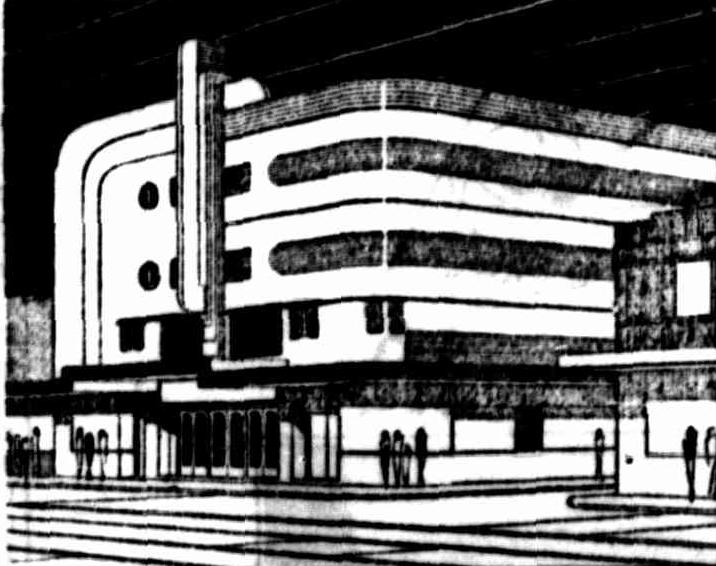
New Theatre at Collaroy.
Subdued but colourful lighting will be given indirectly. The decorative treatment in the auditorium is a study in simplicity contrasted with richness concentrated on the most important positions. Mechanical ventilation and heating plants will be installed. The sound equipment will be of the most modern and effective kind.
Roomy and comfortable chairs will be provided for patrons in all sections of the theatre. The floors will be carpeted throughout. The decision of the proprietors was to provide a theatre up to city standards, with all necessary comforts and facilities for patrons. The building is being erected by Charles A. Bullivant to plans, and under the supervision, of J. C. Rennie Bartle, architect. PICTURE THEATRE. COLLAROY. (1937, September 21). The Sydney Morning Herald (NSW : 1842 - 1954), , p. 8. Retrieved from http://nla.gov.au/nla.news-article17408008
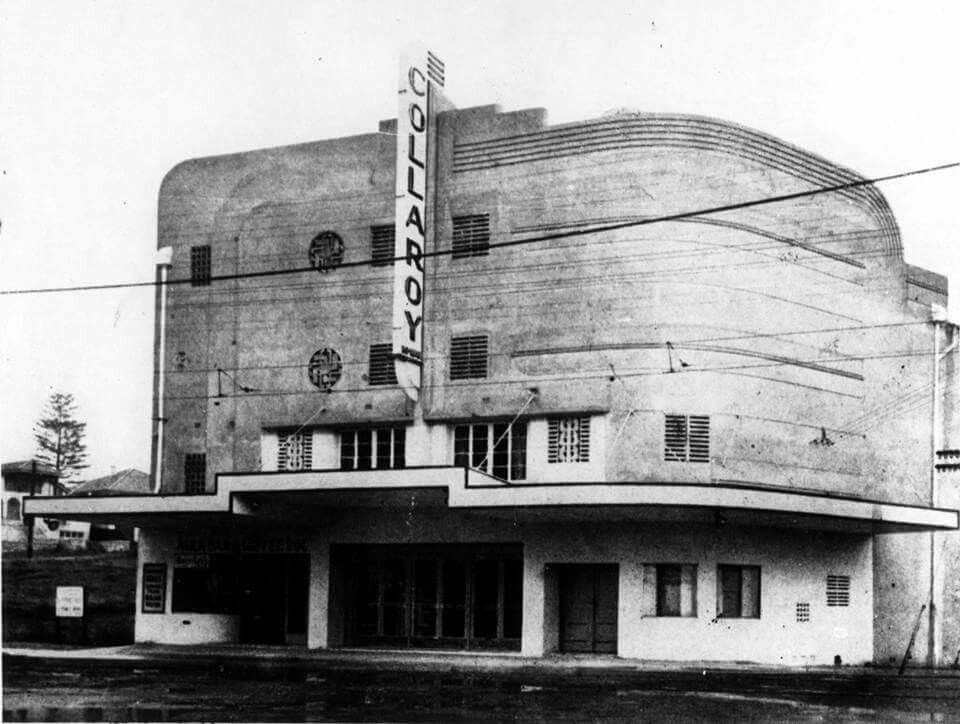
As with the Palladium at Palm Beach, this structure also became utilised by the local community for great causes:
FOR VETERANS' HOME
The War Veterans' Home, Narrabeen, will benefit from a gala evening to be held at the De Luxe Theatre, Collaroy, on Thursday. Mrs. J. Seymour-Allan is the organiser, and artists will include Peter Dawson, Daphne Lowe, and Charles Lawrence. Sweets and souvenir programmes will be sold. A special bus service to Palm Beach and Manly will be provided at the conclusion of the performance. FOR VETERANS' HOME (1941, August 23). The Sydney Morning Herald (NSW : 1842 - 1954), p. 9. Retrieved from http://nla.gov.au/nla.news-article17753288
As well as a target for the dishonest:
THIEVES ENTER PICTURE THEATRE
SYDNEY, This Afternoon. — Thieves ransacked the office of the De Luxe Theatre, Pittwater-road, Collaroy, early this morning.
They entered the theatre by the front door and prised open an iron grill around the cashier's office. When they failed to find anything they ransacked the theatre office in their search for money. Police have not yet ascertained if anything was stolen. THIEVES ENTER PICTURE THEATRE (1951, March 21). Lithgow Mercury (NSW : 1898 - 1954), p. 2 (CITY EDITION). Retrieved from http://nla.gov.au/nla.news-article220736747
Re-named 'Odeon' around 1952-3, the building was leased out to Odeon-Acme-Kings-Theatres, who were part of the Greater Union Theatres chain.
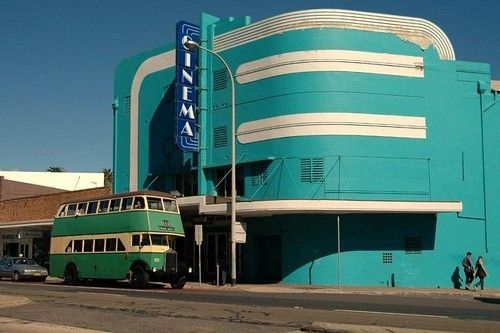
The cinema reverted back to independent ownership in 1967 and was re-named Classic Cinema. In 1987, it was sold to Hayden Theatres, who still operate the Orpheum Picture Palace in the north Sydney suburb of Cremorne. Hayden Theatres only operated the Classic Cinema for two years, and it was was purchased by the current owner United Cinemas in 1989. The building has since been twinned, but retains most of its decorative features, including original seating, drapes and chandelier. A true classic!
Some photos from 2016:
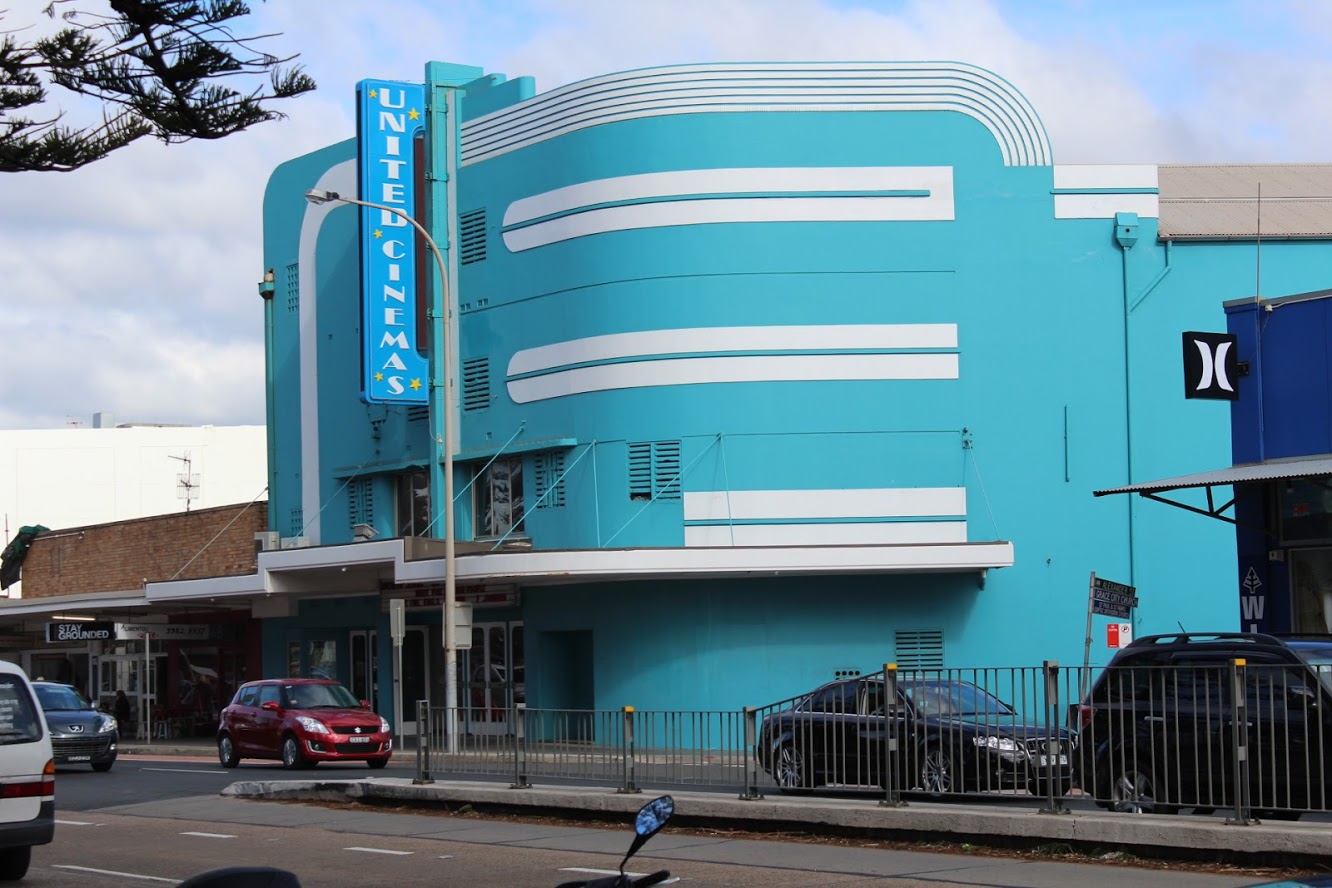
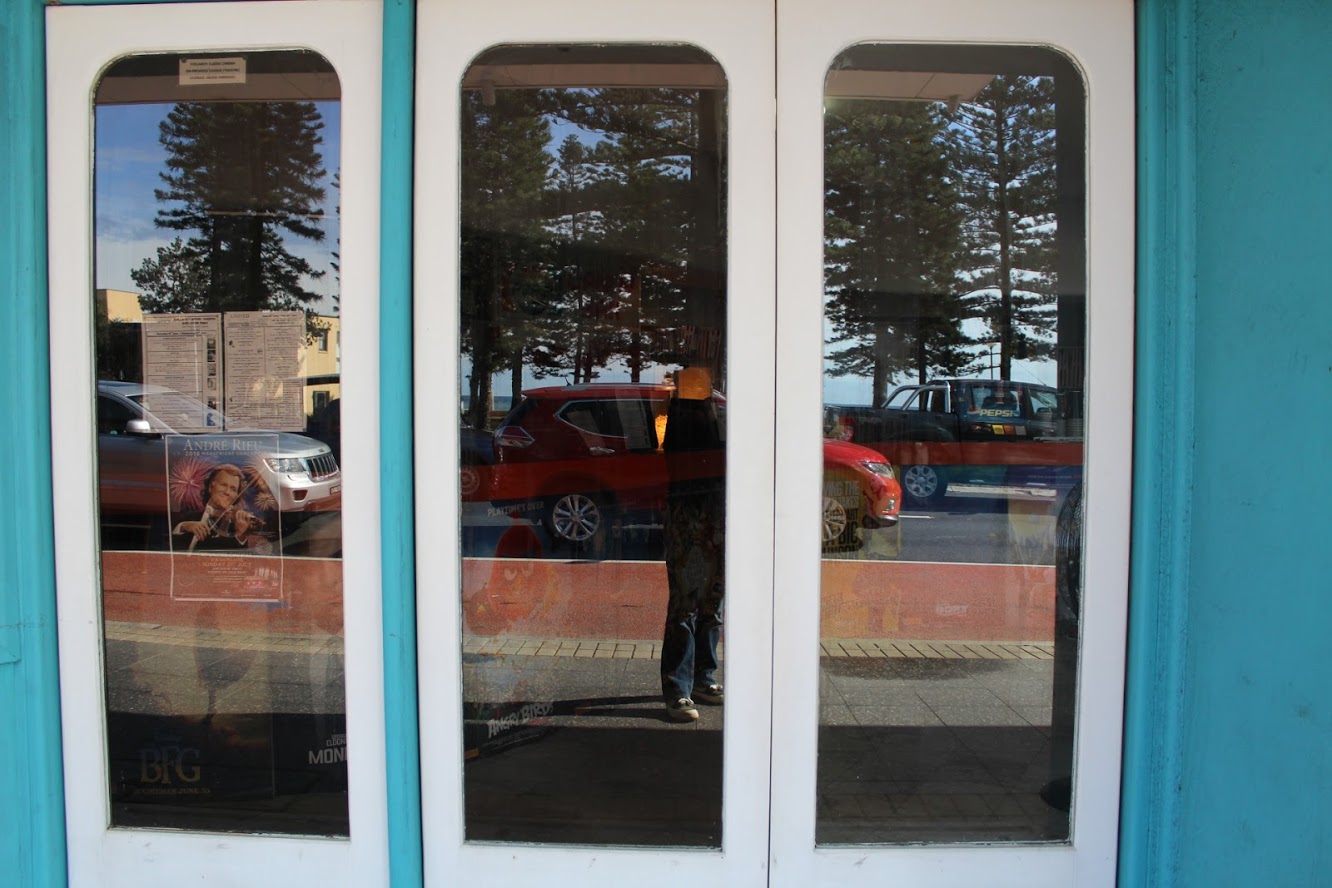
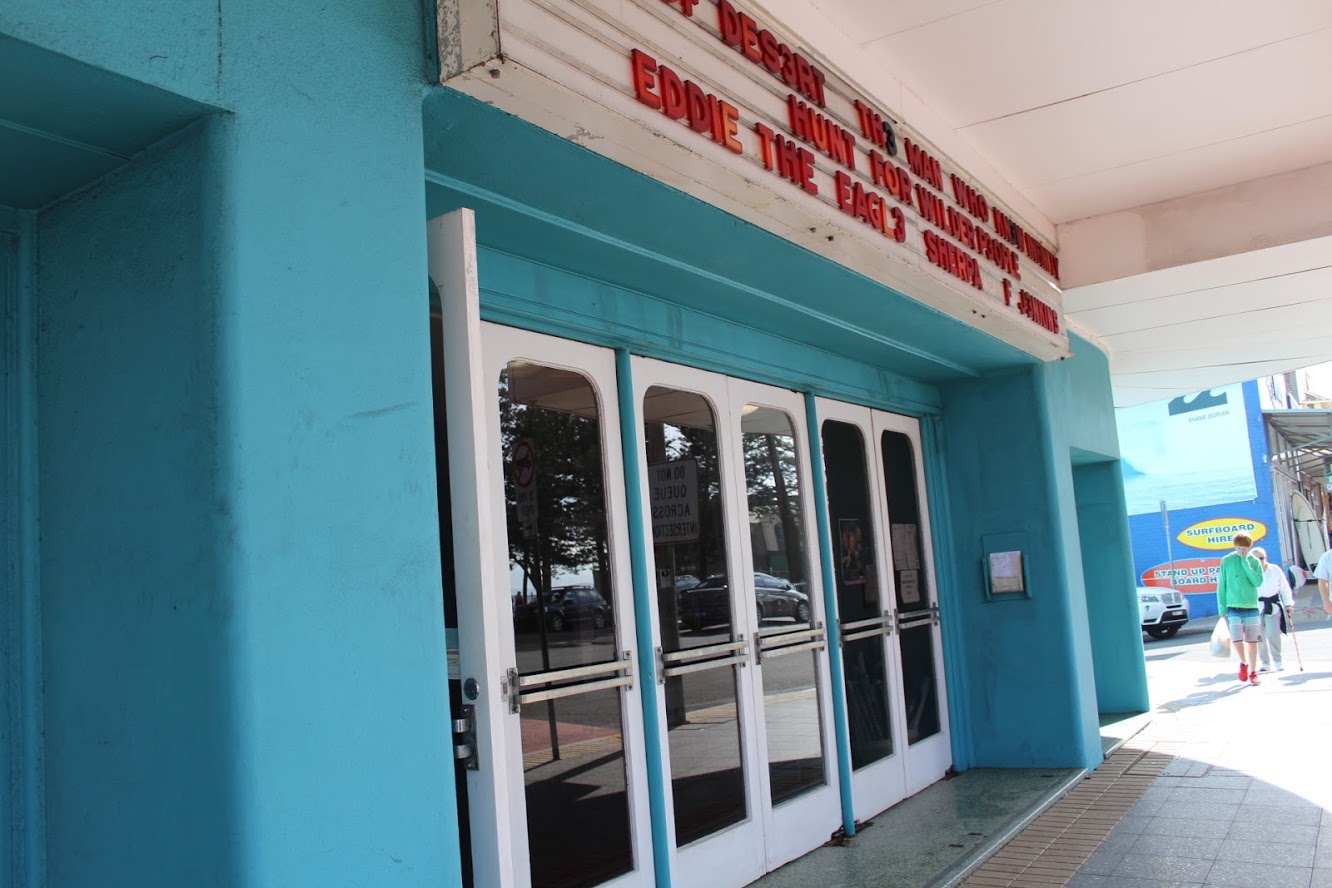
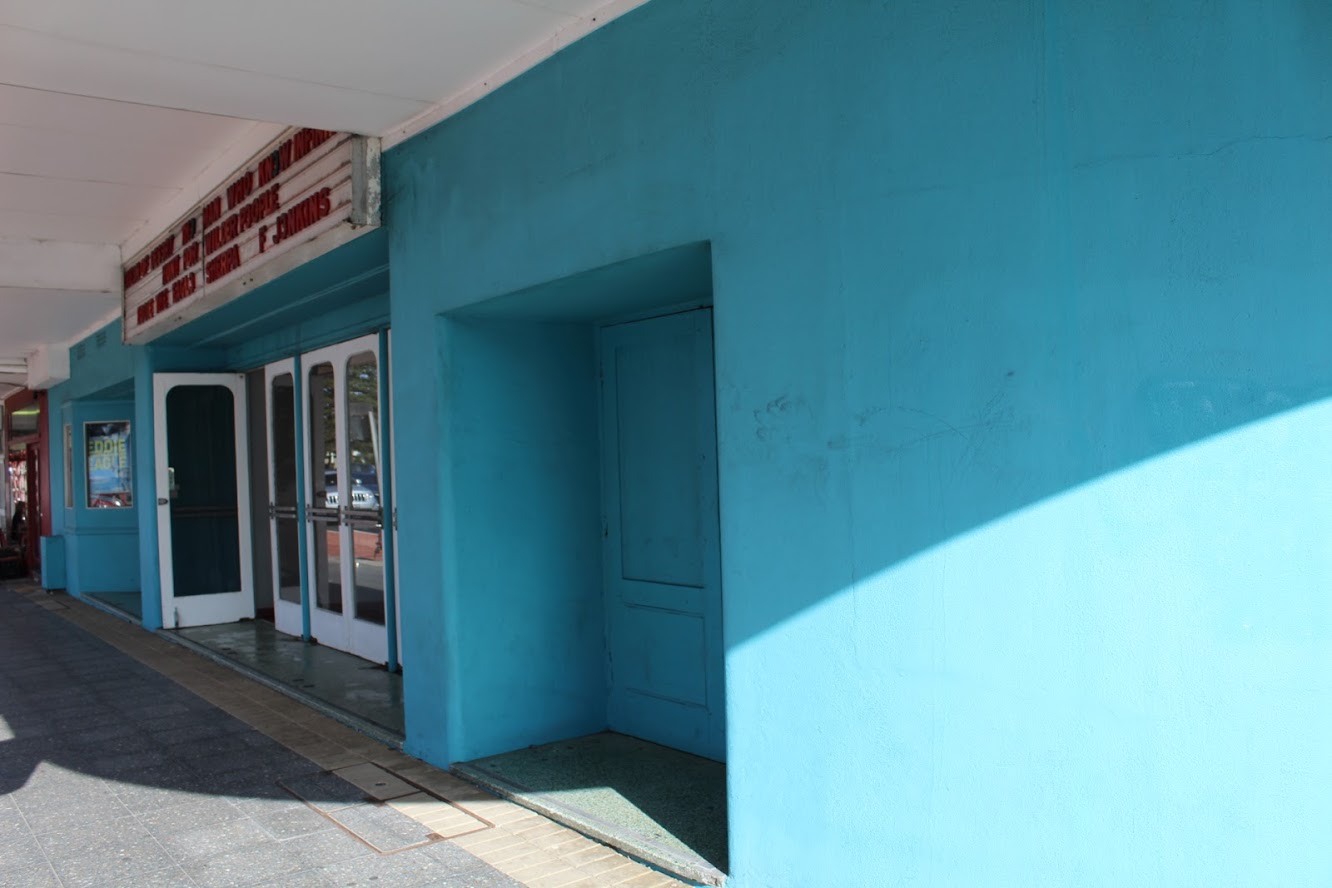
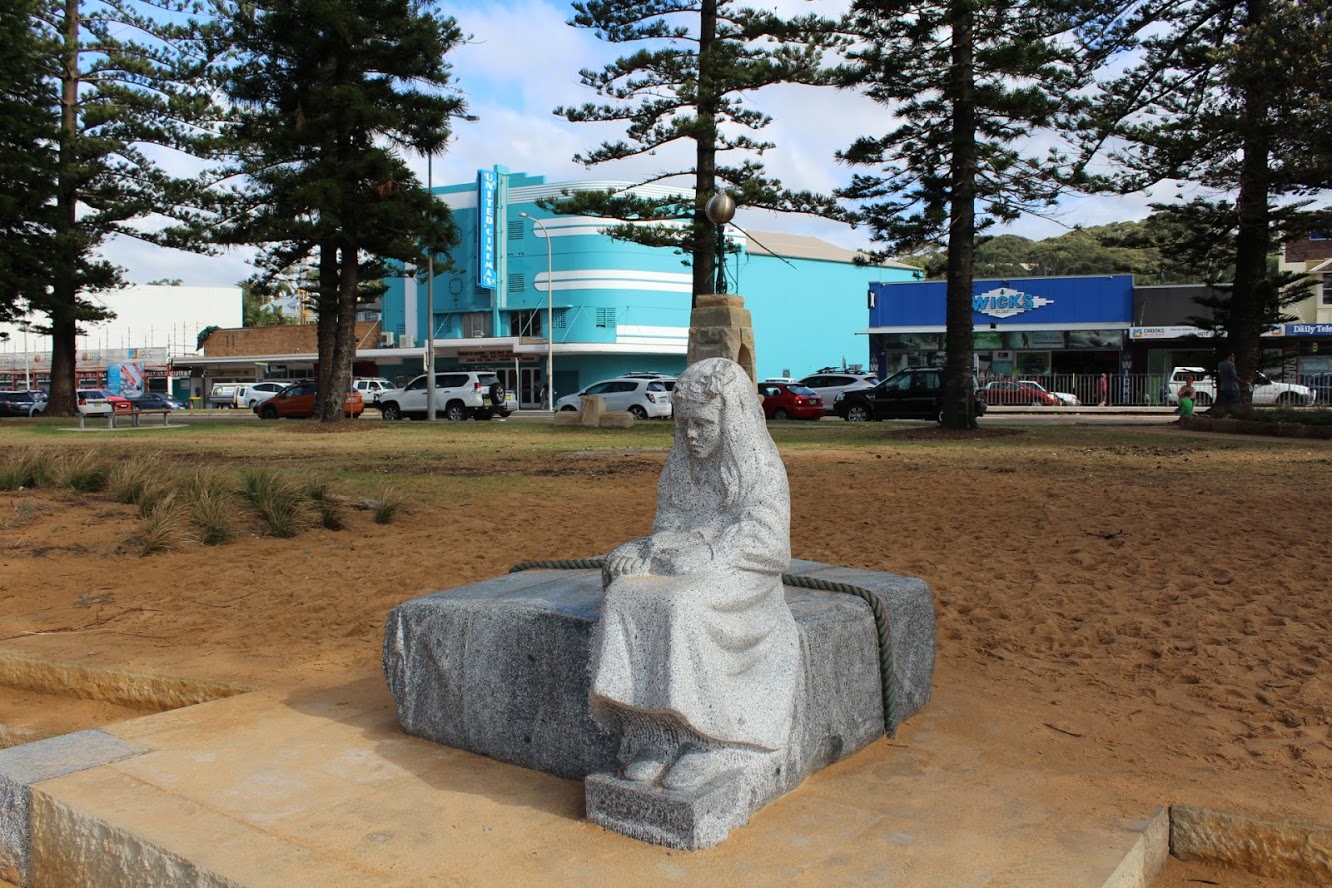
Some more about the architect:
J C Rennie Bartle Collaroy, plans, tenders shortly for dance hall at Mechanics Institute Mudgee and for alterations to existing structure, plans for alterations and additions to duco works of T Low Church Street Mudgee. CONTRACTS LET. (1937, September 21). The Sydney Morning Herald (NSW : 1842 - 1954), p. 8. Retrieved from http://nla.gov.au/nla.news-article17408001
Architect J. C. Rennie Bartle is preparing plans for the erection of a two-storey residence in Weemala Road, Northbridge; a two-storey residence in Pacific Highway, Pymble; a new theatre; extensions to Duco-works in Church Street, Mudgee, and the erection of a new dance hall for the Mechanics' Institute, Mudgee, N.S.W., and alterations to the existing premises. Opportunities for Business (1938, July 20). Construction (Sydney, NSW : 1938 - 1954), p. 20. Retrieved from http://nla.gov.au/nla.news-article222852280
The engagement is announced of Miss Diana Chapman, only daughter of the late Mr. Henry B. Chapman, and Mrs. Chapman, of 'Hillsborough,' Collaroy, to Mr. John Rennie Bartle, second son of Mr. and Mrs. W. Godfrey Bartle, of Balhour, London. Engagements. (1926, April 25). Sunday Times (Sydney, NSW : 1895 - 1930), p. 17. Retrieved from http://nla.gov.au/nla.news-article128132279
BARTLE— CHAPMAN
THE wedding of Miss Diana Templeton Chapman, only daughter or Mrs. L. M. Tcmpleton Chapman, of Collaroy, and Mr. John Rennie Bartle, second son of Mr. and Mrs. W. Godfrey Rennie Bartle, of London, was quietly celebrated at St. James's Church last night. The Rev. J. F. S. Russell performed the ceremony. The bride wore a short sleeveless frock of white romaine heavily headed in crystal and diamante, and a tulle veil caught with a coronet, of orange blossom. She carried a sheaf of white hyacinths and pink roses. The bridesmaid, Miss Ludo Thompson, wore a flared frock of rose and daffodil floral chiffon, with a hem of ruffled rose ribbon, and a black picture hat. She carried a shower bouquet of daffodils and rose stock. Mr. Eric Strelitz was best man. The reception was held at Petty's Hotel, where Mrs. Chapman, in a gown of black romaine with jade trimmings, and a black bat, received the guests. On leaving for the honeymoon, which will he spent at Bowral, the bride wore a fuchsia jumper suit and a fuchsia hat.
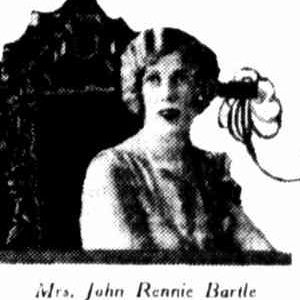
Mrs. John Rennie Bartle
LAST NIGHT'S BRIDES (1926, September 3). The Sun (Sydney, NSW : 1910 - 1954), p. 13 (FINAL EXTRA). Retrieved from http://nla.gov.au/nla.news-article222709867
Bartle, John Carrick Rennie, "Doone,'' Jamieson-parade, Collaroy ARCHITECTS' ROLL OF NEW SOUTH WALES FOR YEAR 1938. (1938, January 28). Government Gazette of the State of New South Wales (Sydney, NSW : 1901 - 2001), p. 339. Retrieved from http://nla.gov.au/nla.news-article228137221
Bartle, John Carrick Rennie, 62 Margaret-street, Sydney ARCHITECTS' ROLL OF NEW SOUTH WALES FOR YEAR 1939. (1939, January 27). Government Gazette of the State of New South Wales (Sydney, NSW : 1901 - 2001), p. 471. Retrieved from http://nla.gov.au/nla.news-article222079118
BARTLE.-February 27 1946, Diana Templeton dearly beloved wife of John Carrick Rennie Bartle of 39a Addison Road Manly, loved mother of Barry, Hugh and Christopher. Privately Interred Northern Suburbs Cemetery. Family Notices (1946, March 1). The Sydney Morning Herald (NSW : 1842 - 1954), p. 14. Retrieved from http://nla.gov.au/nla.news-article17971441
NSW register of Births, deaths and Marriages;
BARTLE DIANA TEMPLETON 1775/1946 Parents: HENRY BRADSHAW LILLIAN CHATSWOOD
BARTLE JOHN HERBERT C 11718/1958 Parents: WILLIAM LOUISA PETERSHAM
THE Governor-in-Council has approved of the appointment of the undermentioned persons to the Commission of the Peace for the State of New South Wales, viz.:—
...Bartle, Reginald Charles, "Redruth", Blaxland-road, Wentworth Falls; APPOINTMENTS. (1957, September 27). Government Gazette of the State of New South Wales (Sydney, NSW : 1901 - 2001), p. 3056. Retrieved from http://nla.gov.au/nla.news-article220378852
Art Deco
Art Deco, sometimes referred to as Deco, is a style of visual arts, architecture and design that first appeared in France just before World War I. Art Deco influenced the design of buildings, furniture, jewelry, fashion, cars, movie theatres, trains, ocean liners, and everyday objects such as radios and vacuum cleaners. It took its name, short for Arts Décoratifs, from the Exposition internationale des arts décoratifs et industriels modernes (International Exhibition of Modern Decorative and Industrial Arts) held in Paris in 1925.
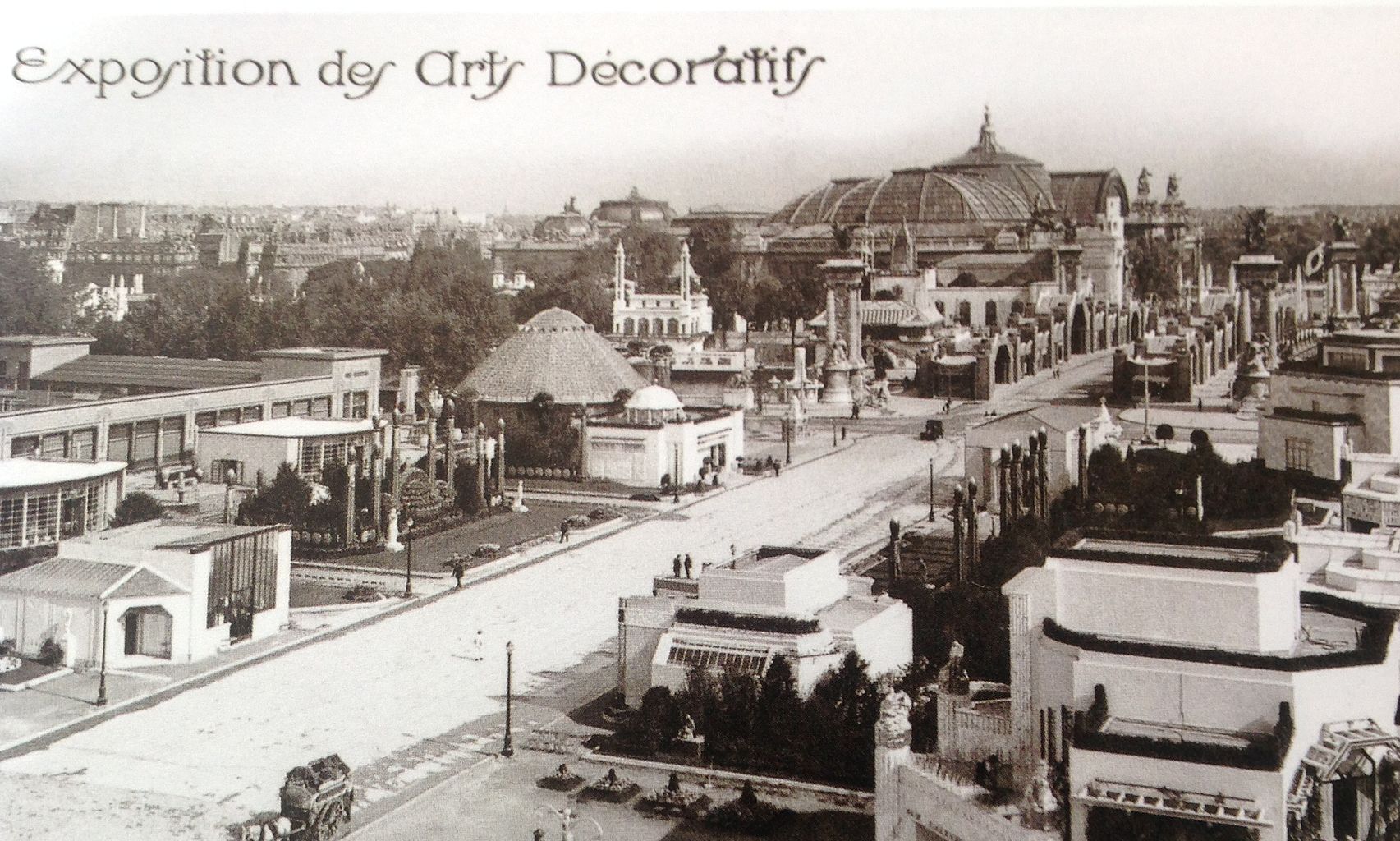
Postcard of the International Exhibition of Modern Decorative and Industrial Arts in Paris (1925)
It combined modern styles with fine craftsmanship and rich materials. During its heyday, Art Deco represented luxury, glamour, exuberance, and faith in social and technological progress.
Art Deco was a pastiche of many different styles, sometimes contradictory, united by a desire to be modern. From its outset, Art Deco was influenced by the bold geometric forms of Cubism; the bright colors of Fauvism and of the Ballets Russes; the updated craftsmanship of the furniture of the eras of Louis Philippe I and Louis XVI; and the exotic styles of China and Japan, India, Persia, ancient Egypt and Maya art. It featured rare and expensive materials, such as ebony and ivory, and exquisite craftsmanship. The Chrysler Building and other skyscrapers of New York built during the 1920s and 1930s are monuments of the Art Deco style.
Streamline Moderne
In the 1930s, during the Great Depression, the Art Deco style became more subdued. New materials arrived, including chrome plating, stainless steel, and plastic. A sleeker form of the style, called Streamline Moderne, appeared in the 1930s; it featured curving forms and smooth, polished surfaces.
In the late 1930s, a new variety of Art Deco architecture became common; it was called Streamline Moderne or simply Streamline, or, in France, the Style Paqueboat, or Ocean Liner style. Buildings in the style were had rounded corners, long horizontal lines; they were built of reinforced concrete, and were almost always white; and sometimes had nautical features, such as railings that resembled those on a ship. The rounded corner was not entirely new; it had appeared in Berlin in 1923 in the Mossehaus by Erich Mendelsohn, and later in the Hoover Building, an industrial complex in the London suburb of Perivale. In the United States, it became most closely associated with transport; Streamline moderne was rare in office buildings, but was often used for bus stations and airport terminals, such as terminal at La Guardia airport in New York City that handled the first transatlantic flights, via the PanAm clipper flying boats; and in roadside architecture, such as gas stations and diners. In the late 1930s a series of diners, modeled after streamlined railroad cars, were produced and installed in towns in New England; at least two examples still remain and are now registered historic buildings. - 3. From Wikipedia
Art Deco, ‘in Sydney as in New York’
Butler-Bowden, C. Art Deco, insites, Newsletter of the Historic Houses Trust of NSW. Winter 1999
During the 1920s and 1930s Sydney astonished visitors and residents alike. Sydney threw off its imperial clothes and donned cosmopolitan fashions. In Sydney as in New York, Art Deco was the unifying language of 1920s and 1930s design, a fusion of technology and populism, decoration and function. The exhibition Art Deco at the Museum of Sydney will take a new look at the Australian interpretation of this fusion of technology and craft, decoration and function. As Sydney and suburbs experience another transforming building boom, the current urban debate would do well to recall Sydney's Art Deco offerings, notably the street level appeal and appropriateness of so many large of its structures. In contrast to later versions of architectural modernism, this design movement was popular and adaptable.
Art Deco was an international style that encompassed diverse elements and regional definitions. Coined in the late 1960s, the term ‘Art Deco’ remains appropriate to the decorative style that evolved prior to the First World War in France. It was given prominence by the 1925 Paris L’ Exposition Internationale des Art Decoratives Industriels et Modernes. But in the 1930s Art Deco was popularly associated with the booming cities, soaring skyscrapers and new transport technologies of the United States.
Art Deco's optimistic declaration of progress and modernity cemented its popularity as Australia rebounded from the Great Depression. It was expressed through all types of buildings, commercial, residential and monumental, ushering in a moment of consistency and accessibility to Australia's built environment.
Art Deco worked on human, street scale and provided definition to the city skyline. The embellishments and architectural detail of Art Deco created theatrical incidents which enlivened the conservative atmosphere of the streets. Its hallmarks: the distinctive stepped summit, ornamental detail including popular motifs such as the rising sun, lightning zig zags and bold geometric patterns with the use of rich and colourful materials still assert their presence on the streets of Sydney today. Its appeal is of recognisability and visual accessibility
The Art Deco office towers of the 1920s and 1930s were among the first of this building type in Sydney. They created a new sense of the city and established an atmosphere of progress and modernity with their rich decoration and new use of materials. As well as a particularly fine pair of bronze and glass lift doors from Delfin House, Art Deco will feature vintage models of Transport House and the CML Building, the exquisitely detailed mini-skyscraper which still embellishes the corner of Bligh and Hunter Streets.
Art Deco will feature spectacular plaster reliefs rescued from the Embassy Cinema, and a door inlaid in a futuristic geometrical pattern of contrasting light and dark wood veneer, as well as a sinuously styled cinema ticket box from the State Theatre which is in the collection of the National Film and Sound Archive.
Art Deco will highlight the textures and materials that were so important a part of the Art Deco language – glazed terracotta, vitrolite, pressed metal, piano finished timber, polished granite and marble. Wunderlich Limited was Sydney's leading manufacturer of building materials and the exhibition will feature fluted bronze capitals and terracotta columns from the company's showroom, created in 1929 to advertise the new aesthetic and new materials.
The machine age look was applied to greater or lesser degrees to all types of buildings — commercial, residential and monumental ushering in a brief moment of consistency and cohesiveness to Australia's built environment. It was not restricted to the city and harbour-side suburbs. Art Deco apartments sprouted across the suburbs, while homes, pubs, service stations and shops also took on the new look. As well as architecture, Art Deco dramatically reshaped interior design — the exhibition will include some elements of interior design with a suite of Art Deco furniture and popular advertisements from the time documenting this new look in design and its appeal in Australia.
...The jazz of moving shapes makes patterns in the streets whilst up against the sunset sky is the jazz-like serrated edge of the up and down masses of concrete and steel. What we cannot get in romantic old subjects in the modern youthful city ..must be turned to account in exploiting its modern possibilities...
From Transport House to the Archibald Fountain, a surprising number of landmark structures emanate from the Art Deco era. Many of them, like the Grace Hotel, have taken on new roles since the 1930s, but have not lost their presence or allure. The exhibition will inspire a new view of Sydney’s streetscapes, and a new appreciation of our 20th century heritage. After a visit to this exhibition, you'll want to take a long walk around Sydney to enjoy our Art Deco treasures.